Ahousaht launches eco-tourism business in territory
Assets of former tour company Ocean Outfi"ers purchased, after 2022 acquisition of Tofino Wilderness Resort
By Denise Titian Ha-Shilth-Sa Reporter
Ahousaht, BC –Anew eco-tourism business calledAhousAdventures has been launched by theAhousaht Ha’wiih in time for the start of the 2023 tourism season.
Based in Tofino and set open May 1, AhousAdventures will offer both cultural and wildlife/nature viewing within the hahulthi ofAhousaht Ha’wiih (hereditary chiefs).

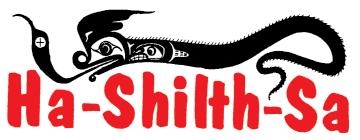
“AhousAdventures, an eco and cultural adventure tour company owned and operated by theAhousaht Nation, will offer an exciting variety of excursions within Ahousaht hahulii (territorial lands, waters and culture) including Hot Springs tours, whale watching and bear watching,” stated a Feb. 23 press release by Maaqutusiis Hahoulthee Enterprises Inc.
The new business was made possible through the recent purchase of assets from the now defunct Tofino-based tour company Ocean Outfitters in February. The acquisition includes a fleet of five 12-passenger boats, a mechanic shop, a store front on Tofino’s Main Street and staff accommodations.
TheAhousaht Ha’wiih (hereditary chiefs) manage several businesses through their Maaqutusiis Hahoulthee Enterprises Inc. (MHEI) and Maaqutusiis Hahoulthee Stewardship Society (MHSS).AhousAdventures is one of those businesses.
AhousAdventures General Manager Corene Inouye is helping to develop the new business, which will offer scheduled tours from Tofino to locations in Ahousaht territories. She said three of the boats will be covered cruisers while the other two are open Zodiac-style boats.
“Our primary focus will be scheduled tours to Hot Springs Cove along with whale and bear watching,” said Inouye. She noted that the boats could be available for private charters.
In order to offer tours, the new company needs to hire about 16 employees and are in the process of advertising the positions.
“We’re looking for small vessel operators/interpretive guides, customer service/ front desk staff, a marine mechanic and a barista,” she said.
The interpretive part of the business is still being worked on withAhousaht contacts that have worked with the First Nation’s Ha’wiih in the past.
“We encourageAhousaht members to apply (for these jobs),” said Inouye, adding that they wish to hire as many interested and qualifiedAhousaht citizens as possible.
The goal, for now, is to create a mentorship training program geared toward Ahousaht youth, who would be encouraged to learn and grow with the company.
Another acquisition made by the Ahousaht Ha’wiih is a luxury floating facility called Tofino Wilderness Resort. The purchase was made in 2022.
“We leveraged the capitol we had to secure the private property, which is in our territory, for the benefit ofAhousaht,” said TysonAtleo, the First Nation’s hereditary representative.
Securing private property, fee simple lands withinAhousaht territory, is a priority for the Ha’wiih, according toAtleo.
Tofino Wilderness Resort, purchased by MHEH in 2022, is located in heart of Ahousaht territory and sheltered in the natural beauty of Quait Bay, near Cypre River.
Operating under separate management thanAhousAdventures, the 16-room floating resort will add another dimension toAhousaht’s growing adventure tourism economic development plans.
It is currently undergoing extensive renovations and rebranding. Part of that work is incorporatingAhousaht art into the property.
“We’ve kept on the three experienced maintenance crew and will be adding Ahousaht members to develop their skills, and we’re working with the former general manager who will help us get it ready to operate,” saidAtleo.
Included in the major upgrades is the construction of world-class staff accommodations.Atleo says that cabins are being built for staff working at the secluded resort.
During the off-season, theAhousaht Ha’wiih plan to use the resort for healing retreats - not only for the First Nation’s members, but also for other Nuu-chahnulth nations.
“We just finished an elder’s retreat there and we’re very proud,” saidAtleo.
He went on to say that the elders were enthusiastic and had kind, supportive words for the Ha’wiih and the work they are doing.
“We are incredibly grateful to the community for their support and kind words,” saidAtleo.
The new resort business is expected to open to the public in the summer of 2024. For now, it is being used for other purposes, like meetings or healing retreats hosted byAhousaht.
“AhousAdventures invites visitors to exploreAhousaht territories through the lens of the people who have lived on and stewarded these lands and waters since time immemorial,” stated the company in a written statement. “The additions of Ahousaht’s Indigenous culture, language, history, and storytelling is a unique tour experience in the region.”
“AhousAdventures is core to Ahousaht’s economic development plans in the tourism sector, with the intent to build a sustainable conservation economy,” they continued.
Besides the resort, guests are invited to visit other destinations withinAhousaht hahulii, including Lone Cone Mountain, the Wildside Trail on Flores Island and Nismaquin Park (Maquinna Marine Park).
Ahousaht also has an agreement with BC Parks for the management of Ma-
quinna Marine Park, including the campground and hot springs. They have created a new visitor-use plan which prioritizes ecological and cultural values, and sets access hours for exclusive Ahousaht commercial use.
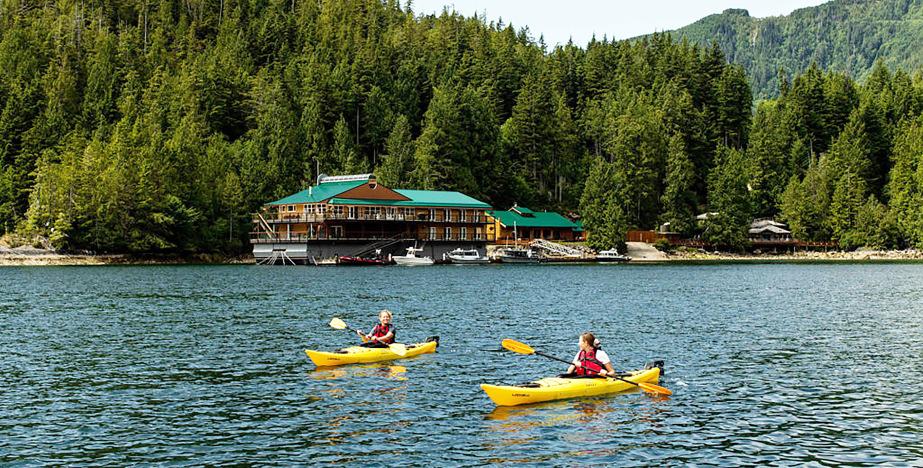
According toAtleo, commercial tourism businesses with paid permits will have exclusive access to the hot springs from sunrise to 11 a.m., and again from 4 p.m. to sunset. The fees collected will go to theAhousaht Stewardship Fund. This fund was established by the Ha’wiih to pay for maintenance of the park. It also financially supports the work of the Ha’wiłh, stewardship guardians, biologists and MHSS in carrying out the Ha’wiłh’s ancestral responsibilities to steward the lands and waters that support Ahousaht musčim.
“We are actively working with Parks BC to inform the public about the new visitor use plan,” saidAtleo. Ahousaht, saidAtleo, has been marginalized out of the tourism industry in the past. They are working to turn that around for the benefit of their people.
For more information about Maquinna Park user fees and schedules, visit https:// mhssahousaht.ca/hot-springs-maquinnapark/
Located at 368 Main Street in Tofino, AhousAdventures will host a grand opening celebration on May 1, 2023. For more information aboutAhousAdventures, call general manager Corene Inouye at 250-726-8596.
According toAtleo, a website forAhous Adventures is under construction and will be found at adventure@mhssahousaht.ca
Oldest First Nations Newspaper - Serving Nuu-chah-nulth-aht since 1974 Vol. 50 - No. 05—March 9, 2023 haas^i>sa Canadian Publications Mail Product Sales Agreement No. 40047776 INTERESTING NEWS If undeliverable, please return to: Ha-Shilth-Sa P.O. Box 1383, PortAlberni, B.C. V9Y 7M2 Inside this issue... Safe drug supply ‘an essential measure’.........................Page 3 Tseshaht calls on feds to backAIRS investigation.........Page 7 MPAprohibits oil development....................................Page 11 Pacific Rim Whale Festival..........................................Page 14 Affordable housing needed forAlberni’s homeless......Page 19
Canada’s
MHSS photo
The Tofino Wilderness Resort is located in heart ofAhousaht territory and sheltered in the natural beauty of Quait Bay, near Cypre River.
Hoobiyee returns to PNE after three-year break
An estimated 12,000 watched cultural performances from over 500 dancers in first event since COVID-19
By Eric Plummer Ha-Shilth-Sa Editor
Vancouver, BC - For the first time in three years, thousands gathered in Vancouver for First Nations performances marking the Nisga’a New Year.
Hoobiyee was held March 3-4 at the Pacific National Exhibition grounds, bringing an estimated 12,000 to watch cultural performances from over a dozen First Nations, including groups from Tseshaht andAhousaht. The annual event was not held at the PNE since March of 2020, days before COVID-19 was declared a pandemic and widespread societal restrictions took hold.

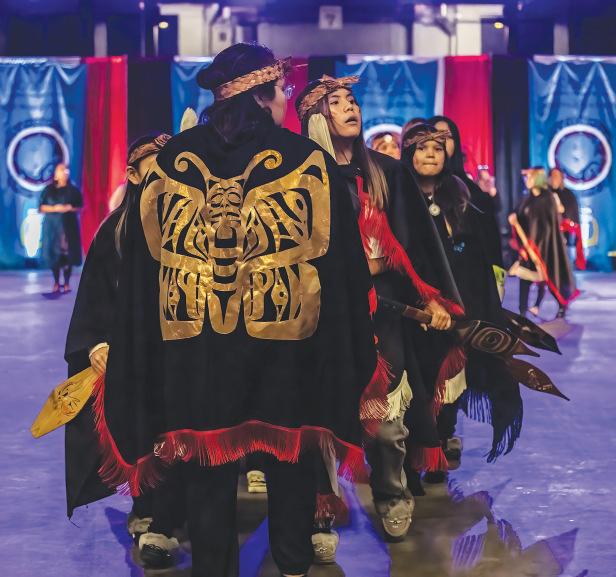
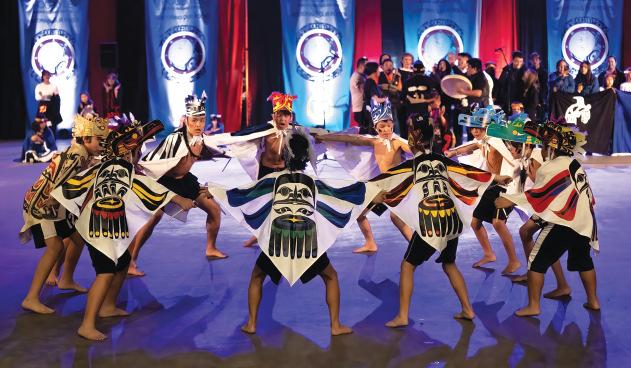
In 2023 the Nisga’a Ts’amiks Vancouver Society brought back the event in hopes

of revitalizing cultural celebration among the First Nation’s people as well as from visiting Indigenous communities.
“We know culture plays a significant role in maintaining our mental health and we want to restore the roots that run in our bloodline by breathing life back into our culture,” said Nisga’a Ts’amiks Vancouver Society CEO Tony Robinson in a press release announcing the event.
Over 500 dancers participated in the weekend event, with more than 70 vendors selling Indigenous crafts, clothing and art.
AHoobiyee celebration marks the Nisga’a New Year, coinciding with the waxing of the crescent moon, a time when oolichan begin their return to the Nass River in Nisga’a territory.
Page 2— Ha-Shilth-Sa—March 9, 2023
Curt McLeod photos Ahousaht dancers perform at Hoobiyee on March 3 at the Pacific National Exhibition.
Safe drug supply ‘an essential measure’, say officials
Illicit drugs claim three more Nuu-chah-nulth lives in one week, as crisis affects families from all walks of life
 By Denise Titian Ha-Shilth-Sa Reporter
By Denise Titian Ha-Shilth-Sa Reporter

PortAlberni, BC – Several Nuu-chahnulth families are reeling after the sudden deaths of two young men from overdoses of toxic street drugs in PortAlberni over the weekend.
The BC Coroner’s Service confirms that they have been notified of the deaths and is investigating.
Sources say that three men were treated for drug overdoses at an apartment on the 3200 block of ThirdAvenue in the early morning hours of March 4. One young man was revived with Narcan, the other two could not be saved. One of the deceased males was a father of young children. The other two involved were in their teens.
Afew days earlier, another male died of an illicit drug overdose, bringing the Nuu-chah-nulth death toll to three over the same week in PortAlberni.
Courtenay-Alberni MP Gord Johns acts as the NDP critic for Mental Health and Harm Reduction in the House of Commons. He was on his way to Ottawa when he heard of the weekend incident. While he didn’t have enough information to make a statement, he said he knew one of the teenagers.
“He would stay with us sometimes, in Tofino,” said Johns.
“This is a tragedy, this is an emergency, and where is the government?” asked Johns. “It’s sad that the message is not getting through.”
According to the BC Coroners Service, in 2022 there were 2,272 suspected illicit drug toxicity deaths in the province. This is the second largest number of suspected deaths ever recorded in a calendar year.
In 2021 there were 2,306 deaths.
In November and December 2022 there were 182 and 210 suspected illicit drug toxicity deaths, respectively. Those numbers amount to an average of about 6.4 deaths per day in British Columbia. On March 7 the Coroner’s Service released the latest drug toxicity deaths in the province for the month of January: 211 British Columbians.
On Vancouver Island there were 386 drug toxicity deaths in 2022 – an average of 1.5 per day on the island alone.
The BC Coroner’s Service includes the following in their definition of illicit drugs:
• Street drugs (controlled and illegal drugs: heroin, cocaine, MDMA, methamphetamine, illicit fentanyl etc.).
• Medications not prescribed to the decedent but obtained/purchased on the street, from unknown means or where origin of drug not known.
• Combinations of the above with prescribed medications
In the past four years, fentanyl has been detected in the post-mortem examinations of more than 80 per cent of toxic drug deaths in B.C., according to a report by the BC Coroner’s Service.
In an effort to shift this fatal trend, B.C. became the first province in Canada to decriminalize the possession of illicit street drugs, with an exemption granted from the Criminal Code of Canada on Jan. 30. Now individuals can legally carry up to 2.5 grams of illicit substances like cocaine, MDMAand methamphetamine.
At the federal level, MP Johns has been actively pushing for changes in laws that could help save lives. That includes calls on the Government of Canada to reform current drug policies like decriminalizing simple possession listed in the Controlled Drugs and SubstancesAct, and to provide a path for expungement of conviction records for those convicted of simple possession. The idea is to help reduce the barriers and stigma that prevent people from accessing lifesaving supports and services.
In addition, Johns has been promoting the idea of a safe, controlled drug supply.
On Feb. 6 he introduced a petition in the House of Commons.
“Lastly, with urgency, they (petitioners) ask to implement a health-based, national strategy for providing access to a regulated safer supply of drugs and expand trauma-informed, just-in-time treatment, recovery, harm reduction services, and public education and awareness campaigns throughout Canada to save lives and take this epidemic head-on,” Johns stated.
There are many critics of overdose prevention sites but, according to the BC Coroner’s Service, they are saving lives. In their latest report, there was only one death in 2022 at a supervised site.
“As we continue to lose loved ones, the effects of the toxic drug crisis remain as some of the most urgent challenges we face as a province,” stated Jennifer Whiteside, minister of Mental Health and Addictions, on March 7.
The provincial government is pouring millions of dollars into treatment and prevention to help address the emergency. Whiteside says funding is going toward new treatment and recovery services, expanding overdose prevention and working to end the stigma around addiction.
“As the work continues illicit substances have become more toxic,” said Whiteside.
The province is investing $1 billion in Budget 2023 to accelerate mental healthcare and addiction services.
“We know that in order to connect people to treatment and recovery, we must first keep them alive,” Whiteside stressed.
The province has pledged to invest and expand harm-reduction measures throughout B.C. to separate people from the toxic, unpredictable illicit drug supply.
When it comes to safe supply to save lives, Whiteside stated that the provincial government has committed $184 million to support their response to toxic drugs, including adding more options for safe prescription alternatives, like diacetylmorphine.
“We are going to keep escalating our response to the toxic drug crisis by using all the tools in our toolbox to save lives and end this public-health emergency,” Whiteside said.
Johns offered his condolences to the families in an email to Ha-Shilth-Sa.
“My heart is with the families, friends and communities of the two young men who died while using toxic street drugs in PortAlberni last week,” he wrote.
“Tragically, these are only the most recent deaths in our community as so many families are being torn apart by what has become the leading cause of unnatural death in our province.”
He went on to say that it is a myth that only those with opioid-use disorder are dying.
“In fact, public health experts tell us that the majority of people who are dying are not considered to be addicted,” Johns wrote. “Everyone who uses criminalized drugs is at risk of dying whether they use occasionally, often or have a diagnosed substance use disorder.”
He concurs with Minister Whiteside, that the first priority in addressing the toxic drug crisis is keeping people alive.
“Providing a safer drug supply alone will not resolve this public health emergency but it has to be an essential measure and it needs to provide a range of medication options that are consistent with the needs and substance use practices of those who are at risk,” Johns stated.
“At the same time, no-fee, publicly funded on-demand treatment must be available to help users address unresolved trauma,” he continued, adding that Indigenous people are disproportionately affected and must have access to culturally-appropriate treatment and proper mental health care. “May these two young people rest in peace and may we come together to resolve this scourge in our country.”
March 9, 2023—Ha-Shilth-Sa—Page 3
Denise Titian photo Dee points to the names of loved ones Tommy and Ruth during an awareness event for families affected by drug overdoses that was held PortAlberni’s Harbour Quay inAugust 2022.
Ha-Shilth-Sa newspaper is published by the Nuu-chah-nulth Tribal Council for distribution to the members of the NTC-member First Nations, as well as other interested groups and individuals.
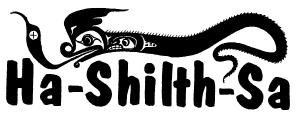
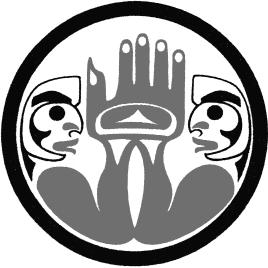
Information and original work contained in this newspaper is protected by copyright and may not be reproduced without written permission from:
Nuu-chah-nulth Tribal Council P.O. Box 1383, PortAlberni, B.C. V9Y 7M2.
Telephone: (250) 724-5757
Fax: (250) 723-0463
Web page: www.hashilthsa.com
facebook: Hashilthsa Ntc
2023 Subscription rates: $35 per year in Canada and $40 per year in the U.S.A. and $45 per year in foreign countries. Payable to the Nuu-chah-nulth Tribal Council.
Manager/Editor/Reporter
Eric Plummer (Ext. 243)
(250) 724-5757 Fax: (250) 723-0463 eric.plummer@nuuchahnulth.org
Reporter
Denise Titian (Ext. 240)
(250) 724-5757 Fax: (250) 723-0463 denise.titian@nuuchahnulth.org
Reporter
Alexandra Mehl (Ext. 286)
(250) 724-5757 Fax: (250) 723-0463 alexandra.mehl@nuuchahnulth.org
Audio / Video Technician
Mike Watts (Ext. 238)
(250) 724-5757 Fax: (250) 723-0463 mike.watts@nuuchahnulth.org
EditorialAssistant
Holly Stocking (Ext. 302)
(250) 724-5757 Fax: (250) 723-0463 holly.stocking@nuuchahnulth.org
DEADLINE:
Please note that the deadline for submissions for our next issue is
March 19, 2023
After that date, material submitted and judged appropriate cannot be guaranteed placement but, if material is still relevant, will be included in the following issue.
In an ideal world, submissions would be typed rather than hand-written. Articles can be sent by e-mail to holly.stocking@nuuchahnulth.org
(Windows PC).
Submitted pictures must include a brief description of subject(s) and a return address.
Pictures with no return address will remain on file.Allow two - four weeks for return.
Photocopied or faxed photographs cannot be accepted.
COVERAGE:
Although we would like to be able to cover all stories and events, we will only do so subject to:
- Sufficient advance notice addressed specifically to Ha-Shilth-Sa.
- Reporter availability at the time of the event.
- Editorial space available in the paper.
- Editorial deadlines being adhered to by contributors.
LETTERS and KLECOS
Ha-Shilth-Sa will include letters received from its readers. Letters MUST be signed by the writer and have the writer’s full name, address and phone number on them. Names can be withheld by request.Anonymous submissions will not be accepted. We reserve the right to edit submitted material for clarity, brevity, grammar and good taste. We will definitely not publish letters dealing with tribal or personal disputes or issues that are critical of Nuu-chah-nulth individuals or groups. All opinions expressed in letters to the editor are purely those of the writer and will not necessarily coincide with the views or policies of the Nuu-chah-nulth Tribal Council or its member First Nations. Ha-Shilth-Sa includes paid advertising, but this does not imply Ha-Shilth-Sa or Nuu-chah-nulth Tribal Council recommends or endorses the content of the ads.
Zoom video still
Les Doiron named NTC vice-president
Yuu>u%i>%ath member’s experience includes four years as nation’s elected president
By Eric Plummer Ha-Shilth-Sa Editor
Les Doiron of the Yuułuʔiłʔatḥ First Nation has been named the next vicepresident of the Nuu-chah-nulth Tribal Council, after being voted into the position on Feb. 22 by NTC society members.
The tribal council held an extraordinary general meeting to fill the position, which was vacated with the resignation of former vice-president Mariah Charleson in November. Doiron was the only Nuuchah-nulth member to step forward for the role, but a vote from society members was still required, which saw the new VP earn 67.8 per cent of votes cast by 59 society members.
“I’m very excited about this opportunity. I can feel the ancestors today,” said Doiron after the vote. “All of you that have reached out to me in one way shape or form or another have been amazing.
I’m proud to be Indian today, I’m proud to be Nuu-chah-nulth, and I really can’t wait to get to work.”
Among his political experience is a four-year term as elected president of the Yuułuʔiłʔatḥ First Nation from 20152019. Doiron also formerly served as deputy chair for the First Nations Health
Council and CEO of the First Nations Education Foundation, a non-profit organization that helped to bring naasnaasʔaqsa, a totem pole designed by Hesquiaht carver Tim Paul, to PortAlberni’s Victoria Quay in 2021.
As the vice-president, Doiron will be responsible for issues internal to the NTC, such First Nations communities, committees and the NTC board.
He was met with a round of congratulations from the Nuu-chah-nulth representatives participating in the online meeting, but leaders also reminded Doiron of pressing issues that will soon need his attention.
Ehattesaht/Chinehkint Councillor Ernie Smith spoke of the state of emergency that was recently declared by the First Nation due the toll of the opioid crisis on its youth.

“We’ve lost six youth in such a short period of time,” said Smith. “We’re in talks with government to help us in this area. As we all know, it comes from residential schools and colonialism and the marginalization of our people. Our people are hurting really bad.”
Since the onset of the COVID-19 pandemic B.C.’s rate of fatal overdoses from illicit drug use has continued to an

accelerated degree of six deaths per day.
“We look for solutions and action,” added Nuchatlaht CouncillorArchie Little. “We’ve done enough talking. We’ve lost enough youth.”
After congratulating Doiron, leaders also pointed to the shortage of eligible candidates who stepped forward to be considered for the vice-president position.
“I would like for a panel or a group to head to the community and the downtown community and find out why no one is putting their name forward,” said Ditidaht Councillor Kelly Sport. “We seem to be getting out of touch with common folk, the people who are not elected to positions in their respected communities.”
“Let’s just take this as a learning lesson where just one person puts their name forward,” added Tseshaht Chief Councillor Ken Watts. “Over the past 10, 12 years we’ve had several acclamations into the role. I think we need to take a look at what is happening there and why and what needs to be improved.”
Doiron will serve the remainder of the current term as vice-president, until another election is held at the NTCAnnual General Meeting in September 2025.
Legal Information
Ha-Shilth-Sa belongs to every Nuu-chah-nulth person including those who have passed on, and those who are not yet born.Acommunity newspaper cannot exist without community involvement. If you have any great pictures you’ve taken, stories or poems you’ve written, or artwork you have done, please let us know so we can include it in your newspaper. E-mail holly.stocking@nuuchahnulth.org. This year is Ha-Shilth-Sa’s 48th year of serving the Nuu-chah-nulth First Nations. We look forward to your continued input and support. Kleco! Kleco!
The advertiser agrees that the publisher shall not be liable for damages arising out of errors in advertisements beyond the amount paid for space actually occupied by the portion of the advertisement in which the error is due to the negligence of the servants or otherwise, and there shall be no liability for non-insertion of any advertisement beyond the amount paid for such advertisements
Page 4— Ha-Shilth-Sa—March 9, 2023
Drinking water lawsuit se led, claim period extended
Most compensation ranges from $1,300 to $2,000 for each year a person lived under a drinking water advisory
By Denise Titian Ha-Shilth-Sa Reporter
Canada – First Nations people living on reserve who had water advisories for extended periods of time could be eligible for compensation if they lived somewhere listed in the settlement agreement.
According to the First Nations Drinking Water ClassAction website, the courts have approved a settlement. The agreement is between Canada and certain First Nations, concerning members who were subject to a drinking water advisory that lasted at least one year between November 20, 1995, and June 20, 2021.
The settlement includes compensation for impacted First Nations and eligible individuals as well as commitments to fund the construction, operation, and maintenance of infrastructure needed to provide regular access to safe drinking water in their homes.
Launched in December 2019 by the Neskantaga First Nation, Curve Lake First Nation and Tataskweyak Cree Nation, the class action lawsuit is intended to address drinking water advisories in their communities and other First Nations across Canada.
The lawsuits target Canada’s failure to take all reasonable steps to ensure that First Nations communities have adequate access to safe drinking water.
Nuu-chah-nulth nations included in the settlement agreement are the Ehattesaht, Hupacasath, Huu-ay-aht, Pacheedaht, Toquaht, and Yuułuʔiłʔath First Nations. These nations are ones that are known to have endured long-term drinking water advisories.
In order to make an individual claim, members of those nations must have lived on reserve during a specific window of time.According to the settlement agreement, the eligible Nuu-chah-nulth places and dates are as follows:
Ehattesaht members living at Chinahkint during Jun. 23, 2006 toAug. 15, 2008.
Hupacasath members living at Klehkoot during Sept. 15, 2004 to Oct. 3, 2005.
Huu-ay-aht members (no place named)
during Oct. 1, 2001 toApril 1, 2003, and July 30, 2004 to Nov. 18, 2005, andAug. 24, 2015 to June 20, 2021.
Pacheedaht members (no place named) fromAug. 8, 2008 toApril 15, 2010.
Toquaht members living at Macoah during March 27, 2002 and March 31, 2014
Yuułuʔiłʔath members living at lands formerly known as IR#6 and IR#7 during May 20, 2014 and Jun. 20, 2021
There are different types of compensation laid out in the $8 billion settlement, including:
$1.8 billion in compensation to individuals and impacted First Nation(s); An additional $50 million allocated for eligible individuals who experienced specific injuries due to drinking water advisories that lasted at least one year between November 20, 1995, and June
20, 2021; These injuries could include gastro-intestinal illness, skin conditions, or cancer.
$6 billion to support the construction, upgrading, operation, and maintenance of water infrastructure on First Nations land. The amount of individual compensation is not yet known, but it will vary for each applicant based on the remoteness of their community and the type of water advisory they had.Achart on the First Nations Drinking Water Settlement website indicates that the payments would be in the range of $1,300 to $2,000 per individual, per year under drinking water advisory.
According to the First Nation Drinking Water Settlement website, eligible individuals may receive a payment for each year, or a portion of each year, that they lived under a long-term advisory that was in place November 20, 1995 to June 20, 2021. Eligible individuals must have resided in the impacted First Nation during that time, with the exception of those under the age of 18 who left their community to attend school.

Canada has agreed to make all reasonable efforts to support the removal of long-term drinking water advisories. Ottawa has pledged to spend at least $6 billion by March 31, 2030 to implement this commitment by funding the actual cost of construction, upgrading, operation, and maintenance of water infrastructure in First Nations communities.
Claims for individual damages submitted before March 7, 2023 will be assessed by the administrator, and eligible payments will be processed. Claims submitted between March 8, 2023, and March 7, 2024, will be assessed, and eligible payments will be processed after March 7, 2024.All claims for specified injuries compensation will be processed after March 7, 2024.

To be eligible for compensation claimants born before Nov. 20, 1995 must have lived on an Impacted First Nation during a long-term drinking water advisory that lasted continuously for a year or longer,
anytime between November 20, 2013, and June 20, 2021.
If born on or after November 20, 1995, the claimant must have ordinarily resided on an impacted First Nation during a long-term drinking water advisory that lasted for a year or longer from Nov. 20, 1995 to June 20, 2021.
The reason for the two sets of dates is that there are legislative limitations in Canadian law that place limits on how long adults have to bring a lawsuit forward after an event happens.
Individuals can also apply for specified injuries compensation for ailments they experienced while complying with drinking water advisories.
Eligible individuals who died on or before Nov. 20, 2017 can have a claim made on their behalf by a family member or personal representative. Children are also eligible to apply, however, payments will not be made to the child directly, but will go to the legal representative that applied on their behalf.
Those making applications for minors or deceased loved ones must fill out representative application forms and may be required to submit additional information or documentation proving they are the appropriate representative.
The deadline for applications is March 7, 2024.
There are resources and supports available for Class Members, including support for individuals and First Nations filling out claim forms.
Information can be found on the First Nations Drinking Water website at https://firstnationsdrinkingwater.ca/
The website has links to online assessment tools so that applicants can test their eligibility. There are application forms on the website as well.
For questions about the claims process and assistance with the claim form, contact the administrator toll-free at 1-833252-4220.
Claim forms can be found here: https:// firstnationsdrinkingwater.ca/index.php/ claim-forms/
March 9, 2023—Ha-Shilth-Sa—Page 5
Ha-Shilth-Sa archive photo
During the summer of 1999 the Tla-o-qui-aht community of Esowista was under a drinking water advisory, bringing protests from residents and displays revealing the state of the village’s water supply.
Court considers $2.8B residential school se lement
List of communities tied to litigation includes seven Nuu-chah-nulth nations directly affected by the institutions
By Eric Plummer Ha-Shilth-Sa Editor
Vancouver, BC - This week a court in Vancouver hears from First Nations affected by residential schools to determine if Canada should proceed with a $2.8-billion settlement to help communities recover from long-standing harms caused by the assimilationist institutions.
The Gottfriedson Band class action litigation is scheduled to be heard in Federal Court Feb. 27 - March 1 to determine if the terms reached between the Government of Canada and the plaintiffs are “fair, reasonable and the best interests of the class as a whole,” according to a website from the legal team behind the lawsuit. The class action is named after Shane Gottfriedson, a former elected chief of the Tk’emlups te Secwépemc First Nation who launched the litigation. It builds upon the Gottfriedson Day Scholars settlement of 2021, which applies to those who attended residential schools but did not live at the institutions.
The litigation affects 325 First Nations that were affected by Canada’s residential school system, which forced over 150,000 Indigenous children to enrol in Christian-themed institutions from the 1860s to the 1990s. Seven Nuuchah-nulth First Nations are included in the class action for how the Christie, Ahousaht andAlberni Indian Residential School affected their communities: Ehattesaht/Chinehkint,Ahousaht, Tla-o-quiaht, Tseshaht, Hupacasath, Uchucklesaht and Huu-ay-aht.
This litigation differs from the previous individual settlements given to residential school survivors that resulted from depositions collected by the Truth and Reconciliation Commission of Canada.
“This lawsuit is not about harms suffered by individual survivors who attended Indian residential schools – instead it is about the collective harm suffered by Indigenous communities as a group as a result of Indian residential schools,” explained the class action’s website.
On Jan. 21 Canada’s Ministry of CrownIndigenous Relations announced an agreement with the 325 First Nations tied to the litigation. If approved in court, the settlement would entail the government setting up $2.8 billion in a not-for-profit trust fund “independent of the government,” according to the federal department.
The fund would be managed by a board
United Church of Canada archives
Over 150,000 Indigenous children were forced to attend residential schools from the 1860s to the 1990s. Pictured are students at theAlberni Indian Residential School, which operated in Tseshaht territory from 1873 to 1974 and is named in the litigation.

million,” stated the government’s announcement of the settlement agreement. The Indigenous communities also would receive a share of the settlement fund’s annual investment income, to be dispersed with consideration given to population size.
Besides numerous radar impressions that indicate possible burials, during the search a jawbone was found, which went to the Saskatchewan Coroners Service for testing. The remains are believed to be approximately 125 years old, belonging to a child aged 4 to 6.
of nine Indigenous directors elected to represent the plaintiffs, with the dispersal of funds guided by four pillars aimed to revitalize First Nations communities beyond the aftermath of the residential school system. These fundamentals include the revival and protection of Indigenous languages and cultures, the preservation and promotion of ancestral heritage, as well as supporting the wellness of the First Nations’community members.An initial amount of $200,000 would be available to each First Nation to develop a proposal that follows the four pillars.
“These proposals will be reviewed and used to support the disbursement of the Initial Kick-Start Funds, totalling $325
Now the Federal Court is tasked to decide if Canada should follow through with this plan. On the first day of court proceedings in Vancouver, Elected Chief Michael Starr of the Star Blanket Cree Nation spoke about how his community continues to be affected by the legacy of the Lebret Indian Residential School, which operated in the First Nation’s territory in Saskatchewan until 1998. The Star Blanket Cree Nation has just one fluent speaker left, he said.
“The loss of language, the loss of culture, the loss of identity, those have impacted us,” said Starr in the Vancouver court room. “I should be here talking in my natural language. I’ve lost it.”
Just as the Tseshaht First Nation are currently engaged in determining how many children died while attending the residential school on its territory by the Somass River, the Star Blanket community conducted ground penetrating radar on the former Lebret site in 2022.
“Before, we never saw that evidence,” said Starr. “If you want evidence, we have that evidence there.”
“We believe that all survivors deserve justice and the compensation to which they are owed,” said Marc Miller, minister of Crown-Indigenous Relations, in a statement. “As we finalize this settlement, we are remined of the importance of collaborative dialogue and partnership in resolving historic grievances outside of the court system.”
“If you approve this, it will be helpful for us to impact our jurisdictional perspective the way we want to do things,” said Starr, who believes that the residential school broke a right-to-education condition of Treaty 4, which was signed by his nation in 1874. “We feel, in a lot of our nations, that it was a breach of treaty, the Indian residential school system, the genocidal residential school policy. But we have endured it, and we are resilient to our past.”
CYPRESS RESTAURANT & LOUNGE
250.724.7629

Page 6— Ha-Shilth-Sa—March 9, 2023
“The loss of language, the loss of culture, the loss of identity, those have impacted us”
~ Michael Starr, elected chief of Star Blanket Cree Nation
Tseshaht calls on feds to back AIRS investigation
First Nation points to churches and RCMP to support its search for truth behind the residential school tragedies
By Eric Plummer Ha-Shilth-Sa Editor
PortAlberni, BC - In the wake of findings that list 67 children who died while attending theAlberni Indian Residential school, the Tseshaht First Nation is calling on Ottawa to get behind its push to dig deeper into what caused the tragedies.


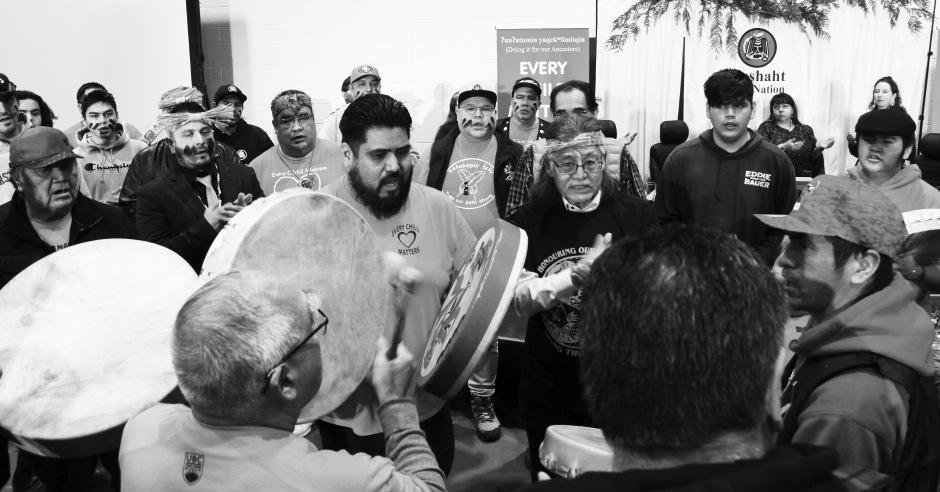
On Feb. 21 the Tseshaht joined the growing number of First Nations that are leading searches into unmarked burials at the former grounds of residential schools in Canada. Based on testimonies from former students of theAlberni Indian Residential School, historical records as well as scanning from drone-operated LiDAR and ground-penetrating radar, at least 67 children have been identified to have died while attending the institution.
The residential school operated in various forms from 1894 to 1974 in Tseshaht territory by the western bank of the Somass River, where it housed children from Nuu-chah-nulth communities and other First Nations from across British Columbia.
As part of the ʔuuʔatumin yaqckʷiimitqin (Doing it for ourAncestors) project undertaken over the past year and a half, Tseshaht contracted GeoScan to conduct LiDAR surface scanning and ground-penetrating radar work of the former residential school site and its surrounding area. GeoScan located 17 spots which it believes could be the possible graves of children, after scanning 12 per cent of the 100 hectares identified by the project team as an area that could potentially contain unmarked burials.
Tseshaht has not announced any intention to excavate these locations for closer examination of the possible burials.
“While Tseshaht is committed to continue to engage with survivors, families and its community, the discussion of excavation and exhumation isn’t part of this phase of the project,” stated the First Nation in a Feb. 21 press release.

As it looks to the next phase, Tseshaht is calling on governments and the churches that ran the residential school to support the investigation into an institution that ran for 80 years in the middle of the First Nation’s main reserve community without its consent.Among its 26 Calls for Truth and Justice are the need for a closer look into the medical records of children who didn’t survive their time atAIRS –including those who were moved from the residential school to a governmentrun Indian hospital.
Currently privacy laws block the ʔuuʔatumin yaqckʷiimitqin project team
from having full access to the records of students while they attendedAIRS, said Sheri Meding, the project’s lead researcher.
“There’s a big gap where we don’t have any information about that because we don’t have access to medical records,” she said.
“Overwhelmingly, the cause of death was due to medical conditions,” she added, while addressing an audience at Maht Mahs on Feb. 21. “Conditions that were very clearly inadequate conditions, unhealthy conditions at the school.”
The 26 Calls also include the need for the federal government to fund revisiting research done by Dr. Ian Mosby, which revealed medical and nutritional ex-
periments that were conducted onAIRS students. These findings have “fallen off the government’s radar” since they were announced in 2013, stated the Tseshaht. Mosby’s findings came out after former prime minister Stephen Harper issued an apology, on behalf of all Canadians, for harms caused by forcing Indigenous children to attend residential schools. Harper’s formal address spoke of emotional, spiritual and sexual abuse at the institutions, and their intent “to kill the Indian in the child.”
But the Tseshaht believe that a revised apology is needed to better address the public’s expanded knowledge of residential school atrocities since 2008, a message from the Government of Canada, the RCMP as well as the Presbyterian and United churches “declaring this a genocide and cultural genocide”. First coined in 1944 to reference the holocaust that was unfolding in Europe, genocide has
come to be defined as “intent to destroy, in whole or in part, a national, ethnical, racial or religious group” by the United Nations Office on Genocide Prevention and Responsibility to Protect. The UN includes “killing members of the group,” “causing serious bodily or mental harm” and “forcibly transferring children of the group to another group” in its definition.
In its 26 Calls the Tseshaht note the past role that the RCMP had in removing children from their communities to be taken to residential school. For this reason, multiple references are made for an “independent body” separate from the mounties to further investigations into the AIRS tragedies.
The 26 Calls list items requiring federal funding, such as drug, alcohol and mental health support for the communities affected byAIRS, annual cultural events, as well as a memorial with the names of past students.
The feds also need to fund the tear down of Caldwell Hall, states the Tseshaht. The formerAIRS building is to be replaced by a new community centre with a gym, fitness room, commercial kitchen and office space. This is to be done under Canada’s $100-million Indian Residential School Infrastructure Fund, states Call No. 22.
“We need accountability, the students that were lost, the students that never went home,” saidAIRS survivor Jack Thompson in Maht Mahs after the project’s initial findings were announce on Feb. 21.
“There should never be cemeteries at schools,” said Tseshaht Chief Councillor Wahmeesh (Ken Watts). “It takes more than one generation to get over 150 years of colonization and abuse or our people.”
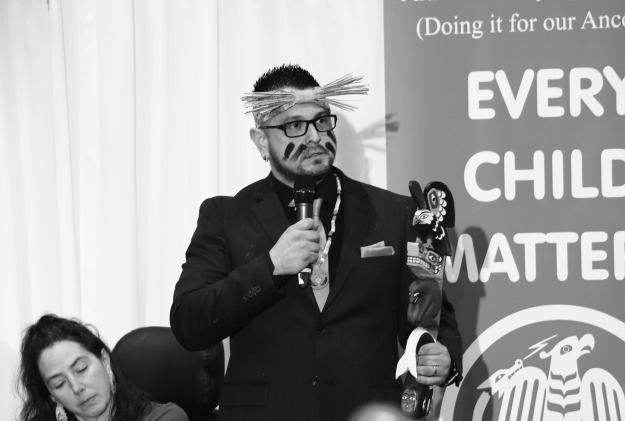
March 9, 2023—Ha-Shilth-Sa—Page 7
Eric Plummer photos
TSESHAHT MARKET GATEWAY TO THE PACIFIC RIM Hours of operation - 7:00 am - 10:00 pm Phone: 724-3944 E-mail: claudine@tseshahtmarket.ca Find us on Facebook
Tseshaht members perform at Maht Mahs on Feb. 21 during the announcement of initial findings from an investigation into deaths at theAlberni Indian Residential School. Chief Councillor Wahmeesh, Ken Watts, (below) speaks at the event.
Maamiqsu guiding revival of sacred female ways
Amidst historical disconnection from culture, some Nuu-chah-nulth matriarchs remain grounded in traditions
By Alexandra Mehl Local Journalism Initiative Reporter
For Marjorie White of Huu-ay-aht, she was given her traditional name, Nanaahimyis, at a potlatch she hosted for her family in 2010. This Tseshaht name had been passed down in her family maternally for generations and given to the eldest daughter.
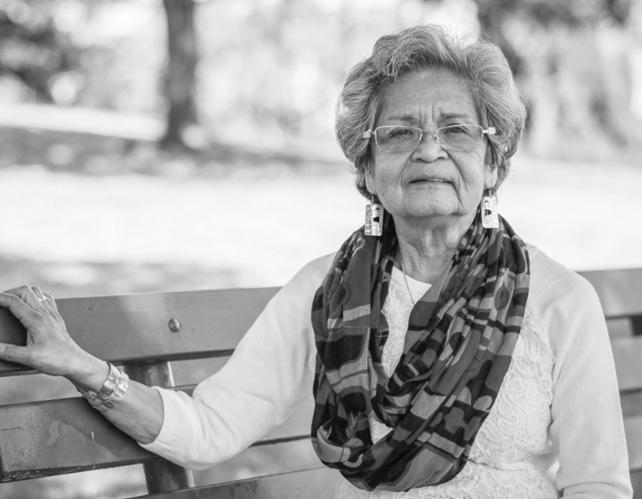
At the 2010 potlatch, White’s brother said that it was time for her to take the traditional name, Nanaahimyis, that had belonged to her great-grandmother of Tseshaht.
“To carry that name is an honor and I carry it with pride,” said White. “I carry it with dignity because of where it comes from.”
At the very same potlatch, roughly 80 family members were named.
“I had called my siblings together and told them that we had to name all of our children, that some of them still had their younger names and that they had to change their names,” said White.
“My grandmother always told me that when I got married and had children that I had to make sure that I did the right thing,” she added. “She emphasized the importance of making sure that my girls had their Indian name.”
The first potlatch White hosted was in the ‘60s when she named her daughters. Later she hosted one to name her grandchildren, and most recently the aforementioned family potlatch in 2010.
“Living away from home and not knowing your family and relatives, [it] was really important for me to make sure that my daughters [and] my grandchildren knew where they come from and who they are,” said White.
Strengthening inter-tribal bonds
“Culturally speaking, the matriarch was essentially in charge of nurturing and strengthening the family bonds; … connecting to ceremony, connecting to home, the environment,” said Wishkey, a storyteller from Huu-ay-aht. “[The matriarch has] always been that reminder of where we come from, teaching where she comes from, where her mother comes from, kind of making those inter-tribal relations and strengthening those bonds.”
Wishkey said that within Huu-ay-aht, and by extension Nuu-chah-nulth culture, there are a number of different important roles and responsibilities, the most prominent being the Tyee, and the Maamiqsu, referred to as eldest daughter and matriarch.
“[They taught] their ability to give us some knowledge about life skills and our responsibilities looking after family, looking after our homes, looking after all that is around us and they always made sure that there is safety and guidance,” said White.
White explains that at a young age the matriarchs begin to teach and share what their responsibility is to their children. Her mother and grandmother taught White respect, kindness, and to be a role model when she was young.
White has gone to hold many achievements, including participating as one of the founders of the first friendship centers in the province, being the first Indigenous person to be citizenship Court Judge and the firstAboriginal person to be appointed to the Vancouver Police Commission.
Most recently she received the 2022 LifetimeAchievementAward from Indspire, which honours Indigenous people across Canada who are inspiring progress in their communities.
Since the 2010 potlatch, more children have been born into White’s family. She intends to discuss with her siblings the naming of those children as soon as possible.
“To me it was a responsibility that I took to show… how I value my culture, even though I have been away from home for so long,” said White.
The natural strengths of women
Nora Martin of Tla-o-qui-aht explains that each family has different teachings, and the women had different lessons, though there are many commonalities within the nations and tribes.

Martin remembers when she would visit her grandmother in Hesquiaht or Opitsaht when she was young, the girls would stay with the grandmother and the aunties while the boys would go out with the uncles.
“My aunts would stay home with us and our grandmothers and then they would teach us things,” explains Martin, “cooking and harvesting and different teachings about raising a family or being a member of the community.”
Martin and her siblings were brought up with different roles.
“My brothers are carvers, my sister’s a regalia maker, and I took care of the monetary part of it,” she said. “We all had different roles depending on what they decided you were going to be.”
For Martin, what she learned from her father and family is now being passed on to the next generation. Martin is teaching her niece the responsibilities that she had held with family finances.
“The matriarch is a very important role because essentially it harnesses the natural strengths of women, which is the nurturing and caring and compassionate side of our people,” said Wishkey.
Wishkey explains that matriarchs traditionally assumed the roles such as midwife, medicine woman, caretaker, and healer. Modern medicine has displaced some of these traditional roles, he explains, especially with childbirth.
“One of the main roles of a matriarch is to really take care of everyone, and especially for the women, and childbirth,” said Wishkey.
Historically, Maamiqsu, would hold a planting ceremony, he explained. The placenta would get planted along with a tree or berry bush that would grow from the ground, which would connect that child to the earth. This is a way that Wishkey believes that traditional practices can be
Nuu-chah-nulth language, it has become more difficult to connect to those practices. Some difficulties are due to the busyness of education, technology, and social media, and there not being the same amount of time to pass on knowledge.
“All of the things that I mentioned were passed on to us in our language, and it was easier for our parents [and] our grandparents in those days to sit down and talk to us about life,” said White.
“I think that’s been a real… disadvantage for us, but I’m hoping that with the revival of our potlatch system and revival of our language that this will again be more accessible.”
White explains that she hopes one day to see teachings passed down to youth as they were before: speaking in Nuu-chahnulth and returning to home territory to learn culture and traditions.
Wishkey said that he honors the women and matriarchs in his life by respecting their teachings.
brought into modern day childbirth. Martin adds that they would bury items with the afterbirth that would follow suit with the child’s foreseen roles and occupations.
“There’s still a number of traditions that we can do, no matter where we are in the world, that can connect our children to Mother Nature,” explained Wishkey. Mother Nature, said Wishkey, is the original giver of life. Ceremonies involving childbirth are often situated in connecting the new child and family to mother nature, he continued.
The cycle of life with teachings
White said that though some practices are carried on, with the adaptation to modern shifts in society and the loss of
“We kind of had one unwritten rule in Nuu-chah-nulth, which would be ḥaaḥuupstał, which is the cycle of life with teachings, and it implies that everything learned is meant to be taught,” said Wishkey.
“That was a really important role… of matriarchs, is teaching not only fundamentals, but also where you come from and taking care of yourself and nurturing and health,” continued Wishkey. “There’s a lot of things that women and mothers naturally do, but it’s a very sacred role in the culture of Nuu-chah-nulth.”
“I believe that our traditions, and our culture is so strong that it helps to ground us in our lives,” said White. “Bad habits have been developed over the years, and it is because we haven’t had that same kind of teaching that we had years ago.”
Page 8— Ha-Shilth-Sa—March 9, 2023
Province of B.C. photo
Despite spending most of her life away from her home territory, Marjorie White has encouraged other Nuu-chah-nulth women to follow their ancestral teachings.
Nuu-chah-nulth is ‘100 per cent affected’ by MMIWG

Issue has targe ed 53 Nuu-chah-nulth women, with two that remain missing, pointing to effects of colonization
By Alexandra Mehl Local Journalism Initiative Reporter
Since 1992, women have been gathering on Valentines Day in the Downtown Eastside for the women’s memorial walk in honor and remembrance of the missing and murdered Indigenous women, girls, and gender diverse peoples (MMIWG2S+).
According to the Native Women’sAssociation of Canada, British Columbia holds the highest number of MMIWG2S+ cases. Of the 582 missing or murdered cases that the NWAC gathered, 160 were in British Columbia, making up 27 per cent of the organization’s database as of 2010.
But others believe there could be close to 4,000 cases of MMIWG2S+ across Canada. The organizers of the Downtown Eastside memorial walk publish a list of names of missing and murdered women, girls, and gender diverse people, which has reached roughly 1,500 from the area who have been missing or murdered since 1992.
“Downtown Eastside isn’t just women from other places, there’s actually Nuuchah-nulth women on that list,” said Lisa Watts, Nuu-chah-nulth MMIWG support worker.
Of the 10,000 Nuu-chah-nulth people, there are 53 women who were murdered or died under suspicious circumstances, and two who remain missing.
Watts explains that the tragedies extend beyond their territory, as Nuu-chah-nulth women have been impacted in DTES, Seattle and across NorthAmerica.
“We’re at 100 per cent affected at the Nuu-chah-nulth tribal level simply because we’re all connected,” said Watts.
“It’s not uncommon to find people that know a loved one that was murdered.” Colonization has been known to have disrupted Indigenous communities and culture through residential schools, foster care systems and potlatch bans. It also disrupted how Indigenous women are viewed.
“Since contact…the system has interrupted Nuu-chah-nulth as a whole,” said Watts. “Men were the rulers and women were possessions. That was not true in our society.”
“Colonialism changed the view of how women are to be seen and perceived and respected,” she added. “The bigger society fully believes, and I think it’s still to this day, that Indigenous women are less than, and that, I guess would be easier
and more disposable.”
“When one of our women go missing… or found dead or alive, non-Aboriginal people always say they put themselves in this predicament,” said Quu’asa Coordinator John Gomez. “But they did not put themselves in that place. That was a system that was created that put us in that place.”
‘They don’t take action right away’
For Nora Martin, Chamaatookwis of Tla-o-qui-aht, her granddaughter Chantel Moore was shot by an RCMP officer in 2020 during a wellness check. Martin has been involved in memorial marches since.
“Anytime any of our people go missing, they don’t take action right away. Sometimes I think our lives are not valued at all,” said Martin when speaking about the RCMP.
Martin adds that from the individual inquiries she’s aware of, what has been recommended by families has been delayed or not implemented at all.
“I believe that we all need to work together with survivors, the communities, the townships or wherever we’re living… to make these changes to implement those recommendations that were brought forth by different families,” said Martin.
Carol Frank is a Tla-o-qui-aht member, advocate for MMIWG2S+ and aunt to Lisa Marie Young. Young was 21 years old when she went missing in Nanaimo in 2002.
Frank explains that she is part of the Lisa Marie Young group, which gets community support to fund initiatives like the Red Dress Project, which keeps her picture on the billboard by Nanoose. The group does searches on their own as well.
Frank explains that each year they’ve held a march to remember Young and the other missing and murdered Indigenous women, girls, and gender diverse folks. This walk happens annually in June, around the time that Young went missing.
“Trying to keep her name out there [and] hopefully somebody will come forward with some information,” said Frank. She said that Indigenous people are not properly represented, so the government treats those missing and murdered individuals as another number.
“It’s really important for people to know who it is that’s missing,” said Frank.
“We need to continue to speak up because it’s not right,” she continued. “[We need] to get them to listen to us and work in partnership with the provincial and federal government.”
At the National Conference with the Assembly of First Nations, Frank learned that there was funding going out to communities, but this is something that many families do not know.
“That’s something we need to bring forward to our community,” said Frank.
“There’s not much money going to the families of missing and murdered Indigenous women.”
Frank explains that this knowledge is important to get out to families because some can’t cover the cost of things such as posters.
For Watts, upholding families and advocates is critical.
“They’re doing the toughest work in the whole world,” said Watts. “Wanting to know what happened to their loved one, [and] finding out for their family.”
Billions in support committed Canada’s Department of Justice has funded services that support families of MMIWG2S+ in their healing through Family Information Liaison Units and for community-based organizations that provide culturally grounded grief and trauma support.
In the 2021 Budget the federal government allocated $724.1 million to launch a Violence Prevention Strategy to support Indigenous women, girls, and gender diverse people who face violence. The funding offers opportunities for new shelters and transition homes across the country that will support First Nations, Inuit, and Métis people.
Leah Gazen, the NDP’s critic for Women and Gender Equality, released a statement one day prior to the memorial walk in DTES, stating that of the $724.1 million for a Violence Prevention Strategy, the Liberals have only utilized five per cent of the funding.
“This delay is costing lives. We should not have to beg for our safety and human rights to be taken seriously,” the statement reads.
The 2021 budget also includes allotment for the ongoing response to the National Inquiry of Missing and Murdered Indigenous Women and Girls with a budget of $2.2 billion over five years, and $160.9 million per year.As part of this support, $55 million is set aside for organizations to address the root causes of violence against Indigenous women, girls and gender diverse people with gender-based violence prevention programming.

The societal phenomenon continues to be recognised by B.C.’s government as well.
“The urgency of this issue and the need for progress on reconciliation and meaningful action is woven throughout everything we do,” said a statement from the province on Feb. 14.
The statement stressed the need for transitional and safe homes for women and children experiencing homelessness or violence, noting the province’s efforts in an action plan addressing gender-based violence alongside Indigenous partners and an advisory group.
“I think it’s a starting point only - we’re not halfway through. We need a lot more,” said Watts, reflecting on the work underway regionally and nationally.
Both Martin and Frank said they have seen not seen change for MMIWG2S+.
“I think that the Downtown Eastside women led the awareness across Canada,” said Watts. “It was done by a small group of women who said, ‘We need this to stop, and this is how we’re going to make it happen’.”
March 9, 2023—Ha-Shilth-Sa—Page 9
Photo by Alexandra Mehl
Carol Martin (left),AFN National Chief RoseAnneArchibald, and BCAFN Chief Judy Wilson speak at a press conference at the Women’s Memorial Walk.
Predators thin out west coast herring, says research

A keystone species that comprises most of the diet of Pacific chinook salmon faces mounting predation pressure
By Eric Plummer Ha-Shilth-Sa Editor
PortAlberni, BC - The consumption of herring by marine mammals and fish off the west coast of Vancouver Island is giving the species little chance to rebuild to a higher volume, according to indicators recently presented by a Nuu-chah-nulthled research project.
The amount being consumed by predators – particularly hake, humpback whales and stellar sea lions – is coming close to what the herring population in Nuu-chah-nulth territory is able to support, said Jim Lane, acting manager of the Uu-a-thluk fisheries program, during a Nuu-chah-nulth Council of Haa’wiih Forum on Fisheries on Feb. 24.

“Predator consumption is almost approaching the total biomass production of WCVI herring,” he said.
Although herring, or ʔaayaaqa in Nuu-chah-nulth, at one time supported a vast commercial fishery in the mid 20th century, in recent decades conservation concerns have led to closures in most parts of the B.C. coast. The commercial catch has for the most part been limited to a fishery opening in the Strait of Georgia for a few weeks each spring, collecting herring with the aim of harvesting females full of eggs before they are released. This valuable roe is mostly sold to markets in Japan, with the actual herring processed into feed for livestock and fish farms.
West of Vancouver Island, stocks have not supported a commercial harvest since 2005. Since then, the herring biomass that has been annually calculated in the region has fluctuated between 5,000 tonnes and over 29,000 - although the overall trend is showing upward curve for the species. The herring biomass off the west coast of Vancouver Island is projected to be 20,298 tonnes this year, according to Fisheries and Oceans Canada’s current herring management plan. With harvesting limited to social and ceremonial purposes, the priority in the region has been to allow the species to rebuild, and since 2017 the Nuu-chahnulth Council of Ha’wiih has agreed to hold off on allowing a commercial catch in its territory until herring show a sustained recovery. What exactly a sustained recovery looks like is still being discussed, although recent correspondence between the Council of Ha’wiih and DFO point to more abundant volumes from the 1990s as a potential target for the species. For most of this period the annual herring biomass west of Vancouver Island was well over 30,000 tonnes.
“[I]t represents herring abundance levels that were able to support successful [food and ceremonial] and [spawn on kelp] fisheries as well as regular commercial seine and gillnet fisheries,” wrote Wickaninnish, CliffAtleo, chair of the Council of Ha’wiih, in a letter sent to Linda Higgins, the DFO’s area director for B.C.’s south coast.
Sent in November, that letter stresses the importance that “regular commercial seine and gillnet ʔaayaaqa fisheries are not considered until the rebuilding target is achieved” in Nuu-chah-nulth territory.
But new information from an Uu-a-thluk study on herring backed by the B.C. Salmon Restoration and Innovation Fund points to environmental factors that could prevent this rebuilding target from being reached in the foreseeable future. In Lane’s recent presentation to the Council of Ha’wiih hake were identified as the
biggest predators of herring on the west coast of Vancouver Island, followed by humpback whales and stellar sea lions.

“The total predation on WCVI herring has gone up exponentially,” said Lane of what he’s seeing each year off the west coast. “It’s around 30,000 tonnes.”
These three top predators are expected
to retain strong numbers in the coming years. Russia is a major market for Pacific hake, but since the invasion of Crimea in 2014 Canadian sanctions have blocked exports to the country, leading commercial fishers to often catch short of their quotas.
“Higher hake populations, unless they
have a natural decline in the population, are here to stay for a while,” said Lane. Since they suffered dwindling numbers in the 1960s, the pacific humpback whale population has steadily grown, and is expected to surpass 5,000 in the next two decades. Meanwhile stellar sea lions have increased five-fold since a pinniped hunting ban was imposed in the late 1960s, from under 2,000 to the approximately 10,000 on the west side of Vancouver Island.
The future of the small fish has widereaching consequences for the B.C. coast, as herring serve as a keystone species in the ecosystem. Herring account for 32 per cent of the diet consumed by harbour seals, 71 per cent of what lingcod eat, 58 per cent of the diet of coho salmon and 62 per cent of what chinook consume, according to DFO research.
This reliance on the forage fish brings ramifications to the salmon emergency that is currently resounding throughout the West Coast. In February the First Nations Fisheries Council of B.C. announced that “Extinction is not an option” due to the paramount importance of Pacific salmon in the province, and at the recent Council of Ha’wiih forum Tla-o-qui-aht Fisheries ManagerAndrew Jackson emphasized that “It’s time for action,” while addressing DFO staff. As commercial boats anticipate another brief season in the Strait of Georgia, where the biomass is forecasted to be 86,713 tonnes this year, information gathered by the Uu-a-thuk project indicates that herring are not necessarily staying within the five zones currently designated by Fisheries and Oceans Canada. Data collected from decades of tagging the fish from 1937 to 1991 show that approximately 30 per cent leave the west coast of Vancouver Island to populate other areas.
“At some level, they’re all connected to each other,” said Lane. “In order to have healthy herring populations in one area - because there’s contributions and mixing - you’re going to need heathy populations across the range of herring distribution.”
Page 10— Ha-Shilth-Sa—March 9, 2023
Letitia Charleson photo Hesquiaht member Joshua Charleson holds herring he smoked with his wife, Letitia, outside their home in PortAlberni.
Irine Polyzogopoulos photo
Seagulls hover over herring as they reproduce at Yuquot, a familiar sign of activity at the sounthern edge of Nootka Island.
Melisssa Renwick photo
Herring support diets of many species, making them foundational to the ecosystem.
MPA prohibits oil development, allows some fishing
Offshore area four times the size of Vancouver Island contains ‘biological hotspots’ to be co-managed with DFO
By Eric Plummer Ha-Shilth-Sa Editor
Regulations that would protect a vast undersea mountain range west of Vancouver Island are currently available for public commenting, a step that brings the biodiverse region closer to being conserved under Canada’s OceansAct. Comprising an offshore area four times the size of Vancouver Island, stipulations for the proposed marine protected area were made available on the Canada Gazette for a 30-day period, ending March 20. The 133,019 square-kilometre piece of the Pacific Ocean runs along the edge of Canadian jurisdictional waters, approximately 150 kilometres west of Vancouver Island and the southern tip of Haida Gwaii.
But the proposed MPAalso crosses the territory of multiple First Nations, a jurisdictional complexity that brought on three years of consultations. What emerged from these talks was the declaration of Tang.ɢwan — ḥačxw iqak — Tsigis Marine ProtectedArea on Feb. 9, with a co-management plan that would include representation from the Pacheedaht, Nuu-chah-nulth Tribal Council, Quatsino and the Council of the Haida Nation. Combining the ancestral Haida, Nuu-chah-nulth and Quatsino languages, Tang.ɢwan — ḥačxw iqak — Tsigis means “deep ocean”, “very deep waters off of our shores”, and “monster of the deep” respectively.
During a press conference last month, Gaagwiis (JasonAlsop), president of the
Council of the Haida Nation, spoke of a management board that would oversee the marine protected area through representation from the federal government and the First Nations involved.
“We’re all coming into this under our own inherent title, our own inherent jurisdiction,” he said. “We’re striving to make consensus decisions and hoping that we all come to the same decision.” Since it was declared an offshore area of interest in 2017, bottom trawl fishing has been prohibited in the area, a continued ban that would bring “negligible” costs to the commercial industry if the MPA designation passes through, according to the current details on the regulations. Oil and gas development would also not be permitted.
“According to a resource assessment produced by Natural Resources Canada (NRCan), there is very low to no potential for conventional petroleum resources in the proposed MPA,” states the federal document.
However, vessels will be permitted to pass over the area, and some fishing can continue, including harvesting for First Nations social and ceremonial purposes that causes no bottom contact. Hook and line fishing for recreational and commercial purposes can also continue, as can midwater trawling in most of the MPA that does not reach lower than 500 metres, although the gear would be required to not fall below the allowable depths.
“Tuna fishing, the most lucrative fishery in the area, will not be affected since it does not undermine the conservation
objective of the MPA,” states the regulation details.
Contravention of these regulations can bring up to $8 million in fines, or even more if an offence brings a criminal conviction.
Tang.ɢwan — ḥačxw iqak — Tsigis has a seabed floor of approximately 1,000 metres below the surface, although the area is full of undersea mountains – or seamounts – that rise to as high as 285 metres below. Much of what is known about the area came from expeditions undertaken in recent years by teams from Fisheries and Oceans Canada and the Canadian Coast Guard. These trips have so far found 46 seamounts, most of the known undersea mountains in Canadian waters. This oceanic mountain range contains higher levels of biodiversity than the surrounding sections of the Pacific, thanks to the spreading of tectonic plates that allow hydrothermal vents to release warm water from fissures in the earth’s crust.
Tang.ɢwan — ḥačxw iqak — Tsigis includes the Endeavour Hydrothermal Vents MPA, the first marine protected area to be recognized under Canada’s OceansAct in 2003.All of the known hydrothermal vents in Canadian waters are within the Tang.ɢwan — ḥačxw iqak — Tsigis boundaries.
“The Endeavour hydrothermal vents, one of the 18 known venting areas in the proposed MPA, are home to 10 species recorded nowhere else in the world,” states the MPAdocument. These “biological hotspots” support
64 species of fish, 70 different birds, sea mammals like orcas, dolphins and otters, 52 invertebrates, such as shellfish and urchins, as well as a dozen coral and sea sponge species recently discovered in the proposed MPA.
Co-management efforts, scientific research and enforcement is expected to cost $3.5 million in federal funds over the next decade to protect Tang.ɢwan — ḥačxw iqak — Tsigis.
As the largest MPAin the Pacific, Ottawa has been keen to make the designation official, bringing Canada closer to its goal of protecting 25 per cent of the country’s ocean by 2025. This is a vital part of Canada’s “ongoing quest for healthier oceans,” said Joyce Murray, minister of Fisheries and Oceans Canada, during the Feb. 9 announcement. She is also working under a mandate from the Prime Minster to protect 30 per cent of Canada’s oceans by 2030.
“We need the commitment of all people so that we can protect the future of our oceans, of our sea life, of our way of life as Indigenous people,” said Cloy-e-iis, Judith Sayers, president of the Nuu-chahnulth Tribal Council. “We committed for future generations, for us, so that they can enjoy what we have, and maybe even a more beautiful world.”
Following the 30-day period of public comments, the government and First Nations plan to move towards a binding agreement to designate Tang.ɢwan — ḥačxw iqak — Tsigis a marine protected area.
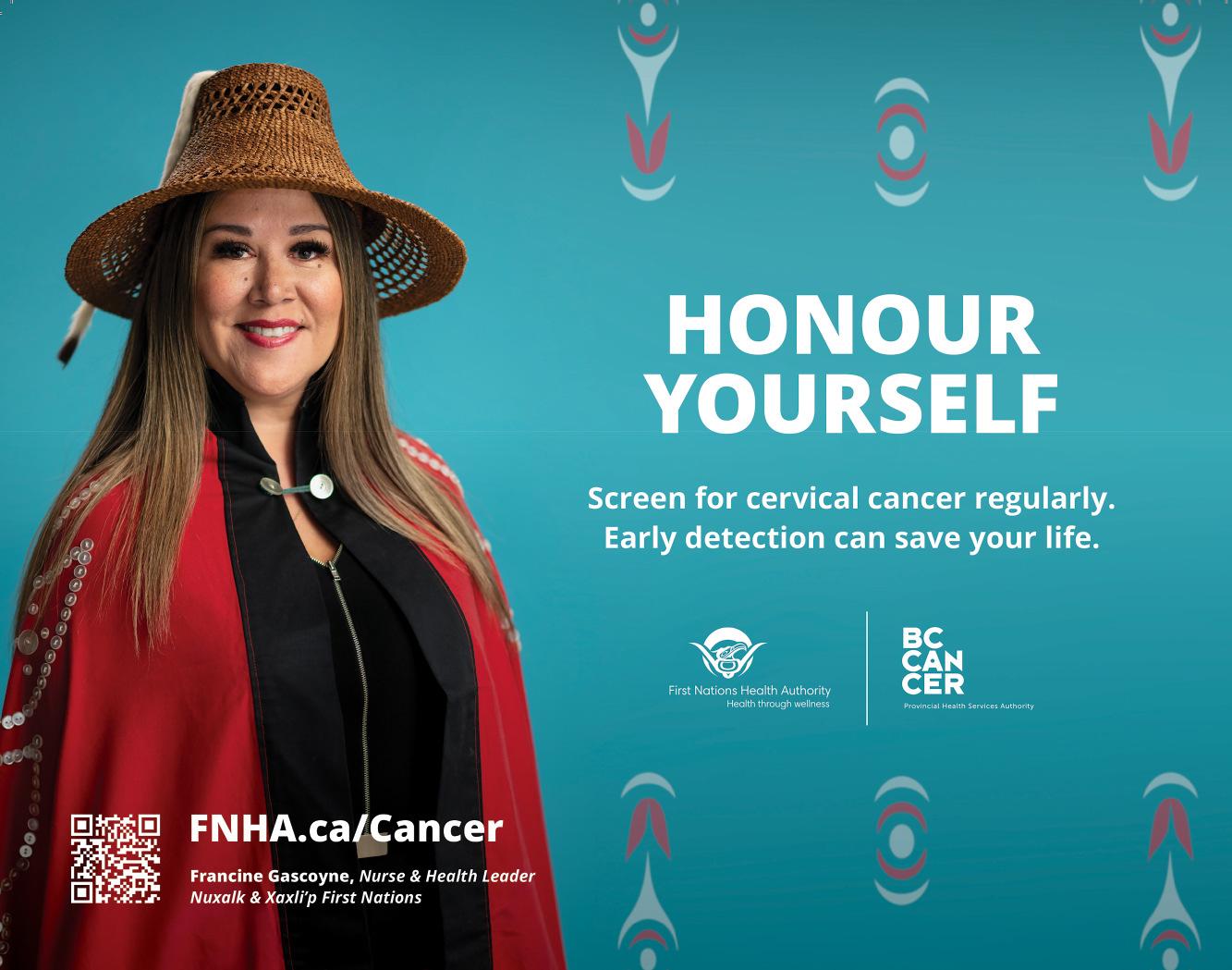
March 9, 2023—Ha-Shilth-Sa—Page 11
Virtual reality videos share Indigenous conservation
Cedar’s Story and Nature’s Guardian connect to place-based conservation efforts, reaching the COP15 audience
By Alexandra Mehl Local Journalism Initiative Reporter
Two new videos that harness virtual reality technology are aiming to change how people see land conservation by telling stories fromAhousaht and Tla-o-qui-aht territory.
Nature United, a conservation organization affiliated with the international Nature Conservancy, produced the videos, which provide an immersive virtual reality experience in Clayoquot Sound.
Ancient forests rooted along the “Emerald Edge”, the coastal stretch fromAlaska through to Oregon, hold 300 million tons of carbon per year, according to Nature United. The organization advocates that the protection of these forests would not only provide solutions that address climate change, but also create resilience within biodiverse ecosystems. Seventeen per cent of the world’s remaining forest carbon and 80 per cent of its biodiversity are located on lands stewarded by Indigenous people, states the Nature’s Guardian video, one of the two virtual reality projects.
TysonAtleo, hereditary representative for theAhousaht First Nation and the Natural Climate Solutions Program director for Nature United, said the Nature’s Guardian video was an opportunity for Ahousaht stewardship guardians to speak about what they do.

“[To] share with the world the importance of [Ahousaht Stewardship Guardians] role and responsibilities and how the relationship that we have to our lands and waters is a deep and meaningful connection to us,” saidAtleo. “It’s a type of relationship, or an approach to relating to natural systems, that we think is important for the world to be aware of, reflect on and to embrace right now.”
“It produces such an emotional reaction to wanting to take care of place, and that’s what we hope was translated through this [virtual reality] project,” he added.
Nature United’s Cedar’s Story and Nature’s Guardians made its way, most recently, to the Convention of the Parties: Convention on Biological Diversity (COP15) in Montreal.
“People from around the world were
transported toAhousaht territories, virtually, and had the opportunity to see and experience what our guardians do day to day, and how they feel about the work that they do,” saidAtleo.
“Experiencing something through multiple senses will always be a richer educational experience than just reading about it or hearing about it,” said Jacqueline Nunes, director of Marketing and Communications for Nature United.
“With this [virtual reality] piece, we had the idea of immersing people in this landscape.”
Nunes explains that the immersive experience makes the videos a new level of education through the ways the audience can connect emotionally.
Gisele Maria Martin ƛaʔuuk, cultural
lifeways guardian, was involved in the making of the video Cedar’s Story in Tlao-qui-aht territory.
Cedar’s Story begins along the mudflats in Tla-o-qui-aht territory, and Martin speaks about the way ƛaʔuukʷiʔatḥ language connects deeply to the lands.
In an interview with Ha-Shilth-Sa Martin explains the ecological resonance that lives within Tla-o-qui-aht language.
“In English people are talking about land-use planning. But in our own language, I just can’t put it that way, it’s land-care planning, [and] it’s landresponsibility planning. [That] is what our ancestors have always done,” said Martin.
Martin explains that this intergenerational care and reciprocity is shown when
Nuučaanuł / Nuu-chah-nulth harvest a plank for a longhouse or canoe; they do not collect from that site again for 175 to 250 years.
Martin, who goes by the pronoun they, said that though there has been lots of effort in Clayoquot Sound to preserve and protect natural sites, it remains an ongoing process. Cedar needed to construct traditional canoes are becoming scarce due to the logging of coastal temperate rainforests forests, notably in neighbouring communities.
“Our rights are not just rights, they are responsibilities,” they said. “We have a responsibility to not only our human future generations, but to the biodiversity of the lands and the waters that we depend upon.”
Phrase†of†the†week:†Naasaakniš†%s>†>iimaqksti†naaciic^i>†%a+†quun†+usmit†%uu%its†@aqniš††qwaqkmis
Pronounced ‘Nah shock nish alth nah gee clith alt koon cluts mit ohh it’s we dos nish qwaa k mis’, it means ‘Our hearts are happy when we see the herring’s coming in, we are going to be eating herring eggs!’Supplied by ciisma.
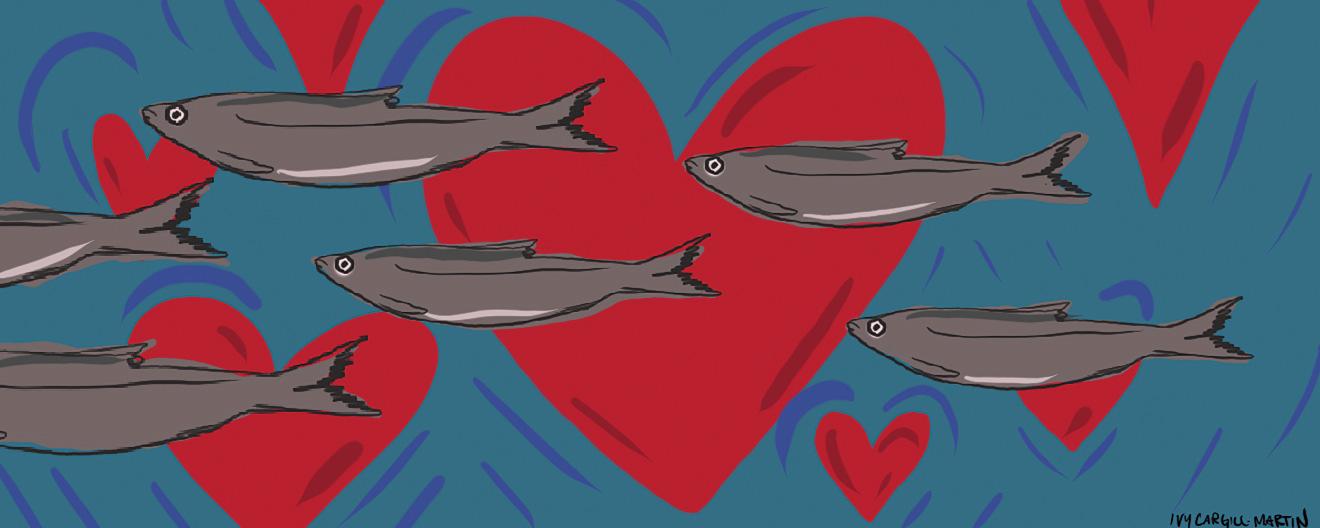
Page 12— Ha-Shilth-Sa—March 9, 2023
Illustration by Ivy Cargill Martin
Nature United Photo
Gisele Maria Martin ƛaʔuuk of the Tla-o-qui-aht First Nation speaks in Clayoquot Sound during the filming process for Nature United’s Cedar’s Story.
Language revival in daily life for Nuu-chah-nulth-aht
On International Mother Languages Day a rise in new learners is reported, as they benefit from fluent mentors
By Denise Titian Ha-Shilth-Sa Reporter
PortAlberni, BC – Feb. 21 was International Mother Language Day and the First Peoples’Cultural Council (FPCC) celebrated the occasion by releasing its Report on the Status of B.C. First Nations Languages 2022. Contained in the report is information about revitalization strategies and how they are progressing.
FPCC is a crown corporation launched by the government of B.C. in 1990 to fund, develop and administer programs that assist the province’s First Nations in their efforts to revitalize languages, arts, culture and heritage.
Through FPCC many programs and resources have been developed that will help revitalize languages. The organization offers things like the mentor-apprentice programs where a language learner is matched with a fluent speaker. They spend time together either in person or over platforms like Zoom for language learning. There have been several Nuuchah-nulth-aht that have participated in this program.
“Despite the challenges First Nations communities in B.C. have faced in the past few years, language revitalization work continues,” said Mandy Leith of the First Peoples’Cultural Council. “We are encouraged to see a significant rise in the number of adult learners, semi-speakers and language-immersion opportunities for young learners, which supports the generational transfer of First Nations languages in B.C.”
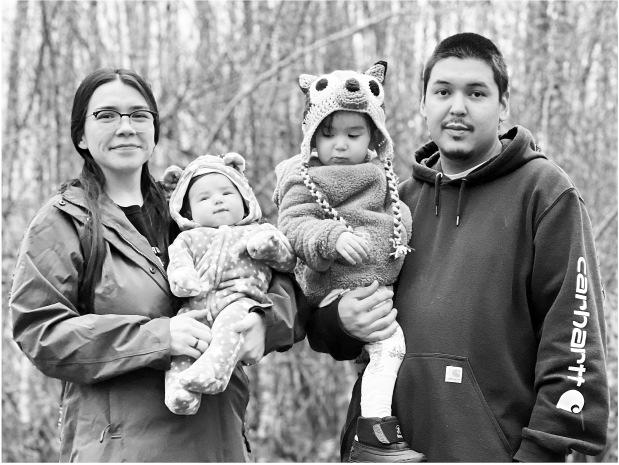
She went on to say that the FPCC supports several language programs, including a few for nuučaanuɫ (Nuu-chah-nulth) learners and fluent speakers.
Chrissie John of Ehattesaht has made great strides in language learning programs and is still learning from her elder mentor while teaching language both at work and in her home, to her children and partner.
John, who prefers to be called by her Ehattesaht name ḥakaƛ, is enrolled in FPCC’s Youth Empowered Speakers and the mentor-apprentice programs. She is enrolled at the University of Victoria working on her Bachelor of Education/Indigenous Language Revitalization degree.

“There used to be 20 of us when we started in a classroom at North Island College in 2018,” said John.
Now there are only five left in the program, including one from Tseshaht, one from Yuułuʔiłʔatḥ and two from Tla-oqui-aht.
ḥakaƛ is doing her final practicum at Haahuupayak School on the Tseshaht reserve. She says that she uses her native name with her students.
“They call me ḥakaƛ instead of Ms. John. I feel like this is important because we all used to have family names before mamałni (white people) renamed us,” said ḥakaƛ.
In order to teach the Nuu-chah-nulth language, ḥakaƛ has to learn it, so she takes part in the mentor/apprentice language program, where learners work directly with fluent Nuu-chah-nulth speakers. She has been blessed with someone fluent in the Ehattesaht dialect of the Nuu-chah-nulth language, a mentor she calls “Nan Fidelia”.
Fidelia Haiyupis was born Ehattesaht territory and is one of the rare elders fluent in this dialect of the language.
ḥakaƛ starts her day by preparing for her Zoom meeting with her mentor, who
lives on the B.C. mainland.
“We do two-hour daily sessions starting at 9:00,” said ḥakaƛ. Her lessons could be about whatever is going on at home or at work.
“The baby could be growing teeth and I learn how to say that, my Nan teaches me how to say that,” she explained.
After the language session with her mentor, ḥakaƛ may go to work at the school or the for the Ehattesaht Language Project. Whatever she is doing, she works Nuu-chah-nulth language into all facets of her life, including her home where she teaches her partner, Hughie Watts, and children what she has learned.
ḥakaƛ is looking forward to graduation this year.
“We finish inApril and then grad is in June, she shared.
In keeping with the love of her mother language, ḥakaƛ gave her daughters Ehattesaht legal names. She admits it was difficult to make it legal but ʔiicʔan and nuusči proudly wear their names wherever they go.
“We use our language with them so that they will grow up with it,” said ḥakaƛ. ḥakaƛ and Hughie use the language with their daughters at home.
“Learning at school is important but it’s so much better if you use it at home,” she noted.
Even though ḥakaƛ is taking university level language courses, they will not benefit her in one important way. She
explained that the government of British Columbia doesn’t recognize Indigenous languages when teachers earn their degrees.
“If they have French then they get category five (diploma) while we only get category four,” she explained.
In B.C., teachers must earn a specific number of credits from a roster of courses set out by the province. Other language courses are on the list, but not Indigenous ones. But ḥakaƛ sees change down the road and hopes it won’t be long before teachers like her will be rewarded for their knowledge of Indigenous languages.
“I want to keep learning and it will probably be for the rest of my life,” said ḥakaƛ.
She noted that there are very few fluent Nuu-chah-nulth speakers, so she is grateful for the gift that elder mentor Fidelia is sharing with her. She can pay it forward and share with others.
“I am grateful to all the mentors,” said ḥakaƛ, adding that the late Katie Fraser, fromAhousaht, was her first language mentor.
“This is important to me because my mother and her parents were forced to go to residential school,” said ḥakaƛ. “I am honoring them and our people by doing this.”
According to the First Peoples’Cultural Council, other nuučaanuɫ language projects they support include the Tseshaht Language Team.
“Tseshaht First Nation is also beginning to implement an adult immersion program and there are also Language Nests in Tla-o-qui-aht First Nation, Hesquiaht First Nation, and Huu-ay-aht First Nations,” said FPCC.
Northern Native Broadcasting launches new First Nation Radio Station, CJNY
By Alexandra Mehl Local Journalism Initiative Reporter
Vancouver, BC - CJNY 106.3 FM hit play on Friday March 3 when it launched at Hoobiyee Ts’aamiks Vancouver with a ceremony. Serving Coast Salish and First Nations in B.C., the Vancouver classic rock will feature Indigenous artists, and plans to host several cultural shows.
To kick off the programming, The Good Medicine Show, hosted byAshley Pimlott, launched on March 6. With half an hour aimed at health and wellness, this show airs every Monday at 6 p.m. and is rebroadcast on Sundays at 4 p.m.
CJNY 106.3 will be a platform for cultural information, community information and messaging, local events, talents, and artist. The station will also have local and regional news, weather, and road reports.
“There’s a real need and want for authentic Indigenous radio in the Lower Mainland,” said CJNY SeniorAccount Executive Yulanda Leighton (Hltaaxuuland Dllga Gyaagang), a Haida member from the Juus Xaay Daga Clan. “We’ve perfected that, worked really, really hard at that up north here for the last 35 years and are really proud and honored to be able to bring that down south to Vancouver and authentically and accurately represent the communities that we broadcast to.”
Ron Bartlett (Legath Nee Myant) is
from Kitsumkalum First Nation of the Tsimshian Nation’s house of Legath.
As the CJNY and CFNR general sales manager, Barlett is part of a team of 18 people connected to their Indigenous communities. They take pride in and have built trust in communities by prioritizing proper pronunciation, and being aware of the cultural significance, he said.
Though the CJNY 106.3 FM can be reached online, the station is broadcasted from Vancouver to Sechelt, as well as Maple Ridge, Chilliwack, Bellingham, Sidney, Nanaimo and the surrounding eastern Vancouver Island towns, among others.
“We’ve actually been quite instrumental in breaking down cultural barriers,” said Bartlett. “The music is so popular amongst non-First Nations community,
that they listen for the music, but they get a big dose of our culture.”
With the large population of Vancouver, Bartlett explains that they hope that CJNY will also facilitate the breakdown of cultural barriers.
Northern Native Broadcasting is also parent company to Canada’s First Nation Radio (CFNR), which serves 82 communities that extend from Quesnel, Bella Bella, Haida Gwaii, up to theAlaska border, Yukon border and eastern border ofAlberta, said Bartlett.
“By tuning in to our programming for our great music, people will also learn and understand more about Indigenous people,” said Leighton in an email to Ha-Shilth-Sa. “This is an important part of reconciliation, and we are proud to contribute to that.”
March 9, 2023—Ha-Shilth-Sa—Page 13
Submitted photo
ḥakaƛ (Chrissy John) is learning the nuučaanuɫ language from a fluent Ehattesaht elder, while also teaching at Haahuupayak School. She is pictured with daughters ʔiicʔan and nuusči and partner Hughie Watts.
Yulanda Leighton is CJNY’s SeniorAccount Executive.
Pacific Rim Whale Festival looks to make a splash
Event celebrates the annual return of the grey whale during the cetacean’s wide-reaching coastal migration
By Konnor Oliver Ha-Shilth-Sa Contributor
Atradition that’s been happening for more than 30 years is returning to the Ucluelet-Tofino area in March.
The 35th Pacific Rim Whale Festival will be running during spring break, following limited festivities over the past few years due to the COVID-19 pandemic.
Started by whale watcher Brian Congdon in the 1980s, he realized that the industry every year was waiting for the return of grey whales to the area, and proposed a festival to celebrate this.
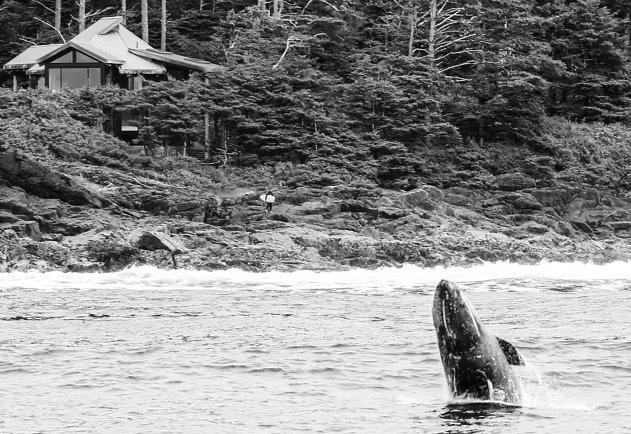
“The festival aims to like, inspire, entertain, and educate for our local community as well as visitors to the coast,” explained festival coordinator Sarah Watt. “The main thing with the festival every year is celebrating nature and the return of grey whales.”
Education is a large goal for the festival, especially for kids and families looking for something to do over the school break.
“We’ve also got children’s Maritime Kids days, which are happening in Tofino and Ucluelet on separate days,” said Watt. “That’s just a whole day filled with educators and entertainers, some from the local area and we’ve also got some coming from Vancouver Island and the Lower Mainland. The Strawberry Isle Marine Research Society will have their build a whale, where children can put together a skeleton of an offshore orca that was washed ashore here years ago.”
Other events for the kids include science experiments with Glenn Kachmar, which will relate to whale adaptations, and the Raincoast Education Society teaching about plankton. The Marine Mammal Rescue Unit from the Vancouver Aquarium will also be there so kids can learn what goes into rescuing stranded mammals.
In past years the festival has had partnerships with the local First Nations,
including weaving workshops and storytelling from renowned artist Roy Henry Vickers. While there is nothing on the schedule with the nations yet, there have been events proposed and announcements about them should be coming in the lead up to the festival.
“We absolutely want to bring that back,” says Watt. “There was a little hesitation over COVID, which is understandable. This is really our first year where we’re putting the festival back.”
The Tla-o-qui-aht First Nations will be running their own event, called naaʔuu, on various evenings throughout March as well in collaboration with the Pacific Rim Whale Festival. The three-hour event will be held at the Best Western Plus Tin Wis Resort in Tofino, and contain “cultural presentations depicting the Nation’s history through song, dance, and traditional carvings coming to life over a delicious dinner” according to the event page.
In their announcement, naaʔuu Co-Producer Hjalmer Wenstob says, “we have been reserved to share any of our culture publicly for fear of it being taken away.”
They describe the event as a way to
“to decolonize and reassert our ways in our communities and the [homeland],” and say that now is time to share their wisdom, traditions, and teachings with the rest of the world.All proceeds from the feast will be supporting the Tla-o-quiaht Tribal Parks Guardians and regional services.
The Tla-o-qui-aht, whose traditional territory includes both Tofino and Ucluelet, were a whale hunting community prior to settlers coming over from Europe. Watt says they hope to have Indigenous speakers join their West Coast Whales forum. “We get together researchers to talk about the latest research and conservation in the area,” she said. “So I would really like to get an Indigenous perspective on that, on their relationship historically the
stewardship now, which we can learn from them.”
Speakers for the forum have not yet been announced.

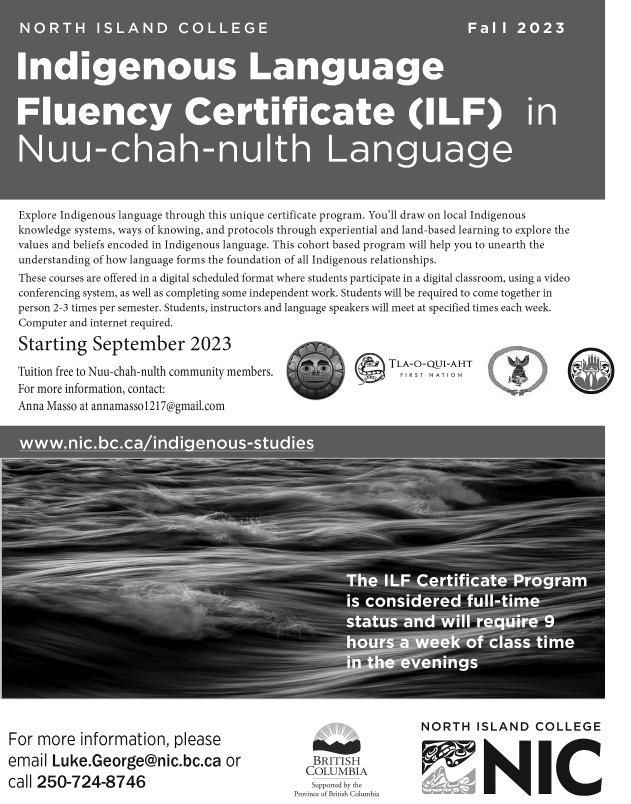
Whale hunting was a central part of Tla-o-qui-aht culture, as Tsimka Martin explains in a blog post written for the T’ashii Paddle School. The ritual of preparation is described as being lengthy, often taking months or even years for a first-time whale hunter to be ready, and would include everything from cold water bathing and physical fitness routines to spiritual and mental preparation.
While the role of whale hunter traditionally belonged to the men, the women also performed rituals around whale hunting, involving prayer and meditation to communicate the whale’s spirit, according to Martin.
Atypical hunt consisted of a team of thee canoes, two for hunting and one for communication. Each would be approximately 35 feet long and carry eight hunters. The canoes would also carry around 40 fathoms of cedar rope and seal skin floats, as well as a lance, bone spike, and harpoon.
Upon completion of a successful hunt, the people of the village would gather on the beach to sing songs and honour the life of the whale as it was brought in. The body would then be carved, making sure no part of it would go to waste.
The Pacific Rim Whale Festival will start with their “Parade of Whales and Wonder” on March 17 and run through the March 25. Afull list of events can be found at their website.
Page 14— Ha-Shilth-Sa—March 9, 2023
Pacific Rim Whale Festival photo
Agrey whale emerges in Clayoquot Sound as a surfer scales the rocky shore.
Tla-o-qui-aht Tribal Parks hosts naa%uu cultural event
Through March celebration takes place at Tin Wis, with feasting, song & art showcasing Tla-o-qui-aht heritage
By Konnor Oliver Ha-Shilth-Sa Contributor
Tofino, BC - The Tla-o-qui-aht First Nation will be holding an event, called naaʔuu, on various evenings throughout March. Naaʔuu, which is a Nuu-chahnulth word, translates to “come together” and “feast,” which is exactly what the nation is inviting people to do.

Running in conjunction with the Pacific Rim Whale Festival, naaʔuu will be held at the Best Western Plus Tin Wis Resort in Tofino. The three-hour event will be held in a conference room made to look like a traditional longhouse.
Over the course of the event, guests will be served a traditional meal, accompanied by storytelling, dance, and song. Proceeds from the event will go towards the Tla-o-qui-aht Tribal Parks and their aim to restoring and furthering the nation’s lands, language, and culture.
Artist Hjalmer Wenstob, who is coproducing naaʔuu, says he looks forward to showing guests who the Tla-o-qui-aht are, according to themselves.
“We are excited to welcome you into our house, to share a little bit of who we are, in our own words,” he said.
Wenstob also says that hosting the event affords them the ability to do something Indigenous peoples across Canada have not always been able to do.
“We have been reserved to share any of our culture publicly for fear of it being taken away,” he said.
When the IndianAct was first passed in 1876, it granted the government and others the ability to seize ceremonial objects and art, something which has seen push back to this day and calls to return those which were taken. Just last month, the Nuxalk nation from the area around Bella
Coola had a totem pole returned from the Royal BC Museum. This after 110 years and multiple requests to have it returned.
Tla-o-qui-aht First Nation describes the event as a way to “to decolonize and reassert our ways in our communities and the [homeland],” and say that now is the time to share their wisdom, traditions, and teachings with the rest of the world.
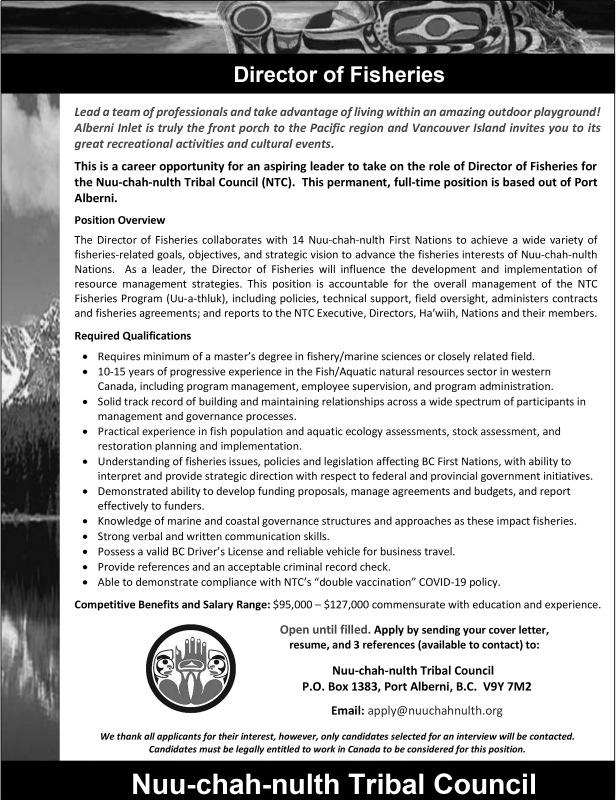
The nation’s Natural Resources Manager Saya Masso says that naaʔuu is an
opportunity to show people what makes the Tla-o-qui-aht nation unique.

“Our ambition is to share our culture,” he said. “By experiencing our culture, it will help visitors understand Tla-o-quiaht’s perspective. To see our culture, to see our art and to understand our stories is how they can participate in our future.”
Masso also says that the traditions of the event go beyond the ones guests will see and extend to the planning process.
“To use any welcome songs or dances we have to seek permission, so of course we have done that,” he added.
Naaʔuu will run on various nights this month between March 9 and 31, with tickets being available through Eventbrite. There will also be an art show as part of the event, with local artists in attendance presenting their works for sale.
Employment and Training
March 9, 2023—Ha-Shilth-Sa—Page 15
Melissa Renwick photo
Timmy Masso and Hjalmer Wenstob sing in a promotional photo for naaʔuu, a cultural event running March 9 to 31 at the Best Western Tin Wis Resort.
Employment and Training
Port Alberni Friendship Centre Volunteers Needed

Need work experience? The Port Alberni Friendship Centre is looking for interested applicants for various positions. Call 250-723-8281



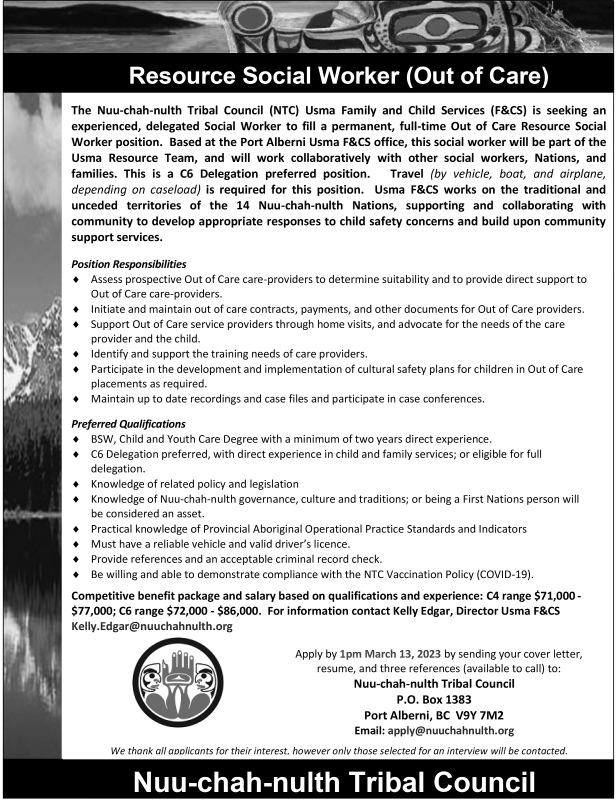
Page 16— Ha-Shilth-Sa—March 9, 2023
View more job postings at www.hashilthsa.com
Employment and Training
Potlatches
Memorial Potlatch
We are extending an invitation to you and your family to join us as we celebrate the life of our late mother MARGARET JACK and my perfect late son TREVOR ANTHONY JACK on May 6, 2023, starting at NOON at the Thunderbird Hall, 1420 Weiwaikum Road, Campbell River. If you have any questions, please message Anita Baker on Facebook or text/call 778-676-1012.
Marcy Keitlah Memorial Potlatch
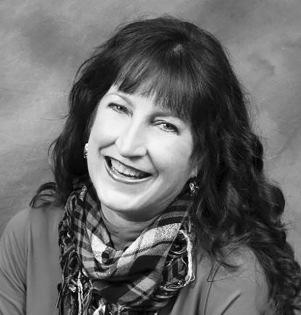
Sptember 23, 2023
Port Alberni, BC
Your hosts; Calvin Keitlah, Cory Frank, along with Grandparents Marilyn Watts and Rudy Watts Sr.
Grant closes trail gap to link Tofino and Ucluelet
Multi-use path will allow users to walk, run, bike, skateboard or scoot safely on the 40-kilometre trail
By Denise Titian Ha-Shilth-Sa Reporter
Ucluelet, BC – The multi-use trail that skirts along Highway 4 west between Tofino and Ucluelet will have the last 1.2-kilometer gap closed thanks to a grant from BCActive Transport.
According to theACRD (Alberni Clayoquot Regional District), who received the $500,000 grant, the funds will go towards finishing a gap in the trail near the Tofino/ Ucluelet junction on Highway 4. The announcement was made in anACRD media statement issued Feb. 22, 2023.

“Once complete, the path will close the 1.2-kilometre missing link between the Pacific Rim National Park Reserve ʔapsčiik tašii Trail and theACRD MultiUse Path that begins at the junction and connects to the District of Ucluelet’s MUP,” the statement reads.
Tofino’s MUP (Multi-use Path) runs from the village for eight kilometres, connecting with the north end of the Pacific Rim National Park Reserve ʔapsčiik tašii Trail.
The closure of the 1.2-kilometer section of trail will mean that the paved multiuse path will extend fully between Tofino and Ucluelet, allowing users to walk, run, bike, skateboard or scoot safely on the 40-kilometre paved trail between the two villages without having to use the shoulder of the busy highway.
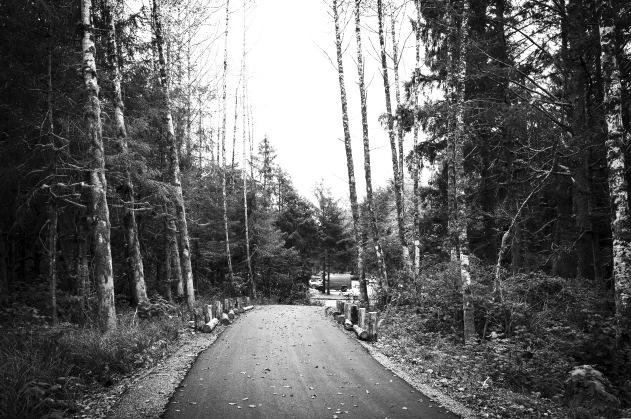
“TheACRD has been working on this project for more than five years, through many grant applications, and we are pleased the missing link will finally be closed,” explainsACRD Director Marilyn McEwen, District of Ucluelet. “With the completion of the apsčiik tašii trail in the Pacific Rim National Park Reserve,
traversing the trail through Ucluelet, Tofino,ACRD, and the park has become another popular tourist activity.”
According to theACRD the grant adds to others that have already been committed to finish the project. Other contributions are an Island Coastal Economic Trust Grant of $200,000 and more than $700,000 from the Canada CommunityBuilding Fund that has been committed by theACRD Board.
TheACRD Multi-use Path is expected to be complete by March 31, 2024.
Established in 1966, theAlberni–Clayoquot Regional District is made up of member municipalities including Port Alberni, Tofino, Ucluelet, Bamfield, Beaufort, Long Beach, Sproat Lake, Beaver Creek and Cherry Creek.

According to theACRD, it is the first regional district to welcome full participation on the board from the treaty First Nations of Huu-ay-aht First Nations, Yuułuʔiłʔatḥ Government, Uchucklesaht Tribe Government and Toquaht Nation. TheACRD is within the territory of the Nuu-chah-nulth nations.

March 9, 2023—Ha-Shilth-Sa—Page 17
Melissa Renwick photo
Paving is complete along the multi-use pathway, ʔapsčiik tašii. New funding will link a 1.2-kilometre section of the path by the Highway 4 junction.
Marilyn McEwen
Rainbow Gardens opens 48 affordable apartments
Rental building constructed next to long-term care facility to supplement a supportive elders community
By Denise Titian Ha-Shilth-Sa Reporter

PortAlberni, BC – Tsawaayuus Rainbow Gardens has opened its new apartment building adjacent to the existing facilities, offering 48 affordable, independent living spaces for seniors.

Meaning side of a hill in Nuu-chahnulth, the HuupsitasApartments opened in November 2022 at 6161 Russell Place in PortAlberni. It is the latest expansion of the Tsawaayuus senior’s complex that started in 1992 with the construction of a facility that offered 30 long-term care beds primarily for Indigenous elders.
In 2009 a new wing was built, offering 10 more assisted living units.Adecade later there was a major expansion with the addition of 13 long-term care beds and 20 independent living units. Completed in November 2022, HuupsitasApartments boasts another 48 independent living units. There are 35 one-bedroom units along with 10 onebedroom suites that are fully accessible for those with mobility issues.Also, there are three two-bedroom units.
Built by the Westcoast Native Health Care Society, HuupsitasApartments is a newly constructed five-story building, some with views overlooking the Somass River. They are being offered as affordable rental homes for low to moderateincome Indigenous elders, seniors and elder people with disabilities who can live independently.
According to building managerArt Van Volsen the units are subsidized by BC Housing and certain criteria must be met to qualify for a rental unit. The units are strictly for those aged 55 and older. There are nine units reserved for seniors on social assistance. Those units rent for about $375 a month. Van Volsen says the rental details are sorted out between the tenant and BC Ministry of Social Development. There are only three of these
units left.
For low-income seniors there is a middle-rental tier where the tenant pays 30 per cent of their income.
“Some are paying rent as low as $375 to about $500 a month,” said Van Volsen.

He added that there are nine or 10 units in this category and only one are two are vacant.
The remaining units rent for $750 for a one bedroom to $850 for a two bedroom. All the two-bedroom units are filled. There is a strict no-pet policy along with a substance use policy.
On the upside, hot water is included in the rent and there is a new scooter shelter for tenants.
The close proximity of the independent units to the long-term care facility allows residents from the different buildings to mingle with one another, many of whom are related.
“Sometimes tenants help one another with their needs,” said Van Volsen adding that in one case, one tenant helps another with cooking.
In another case, a man living in HuupsitasApartments can go over to visit his wife in the long-term care facility, taking her out for visits.
“They are building their own community,” said Van Volsen.
He stated that there are still eight one-bedroom units available, but tenant interviews are coming up in the coming weeks. While the apartments were built with Indigenous people in mind, Van Volsen says there are no guidelines in place.
In the other 20-unit independent living complex, 18 of the units are occupied by Indigenous people.
For more information about Huupsitas Apartments call 250-724-5655.Application forms and more information about the apartments can be found on their website at https://rainbowgardens.ca/rent/ or email info@rainbowgardens.ca

henna artist
By Aleesha Sharma
Book your henna session for community events, weddings, birthday parties, school events or any special event.



Phone: 250-730-1262 or 250-720-3096
E-mail: aleesha_sharma1@hotmail.com
Page 18— Ha-Shilth-Sa—March 9, 2023
Denise Titian photo
HuupsitasApartments opened in November 2022 at 6161 Russell Place in Port Alberni. It is the latest expansion of the Tsawaayuus senior’s complex.
Affordable housing needed for Port Alberni homeless

Count sees growing proportion of Aboriginal homeless in the city, with many unsheltered Ahousaht members
By Karly Blats Ha-Shilth-Sa Contributor
PortAlberni, BC - With snow falling and temperatures hovering around 0 degrees Celsius, more than 100 walkers faced the cold to walk in the annual Coldest Night of the Year fundraising event on Feb. 25.
This year’s walk raised more than $43,000 for PortAlberni’s Sage Haven Society, which is 124 per cent of their goal.
Sage Haven Executive Director Ellen Frood said they are thrilled to have surpassed their fundraising goal.
“The goal was $35,000 and we’re over $43,000 so that’s absolutely spectacular. We’re thrilled and so thankful to the community for coming out and all the walkers that came in not-so-great weather, and of course the sponsors,” Frood said, adding that funds from the event are used in two areas. “One for our transition house, which is our 30-day emergency shelter for women and kids, and the other is for our drop-in center on ThirdAvenue. So it’s all about bringing in people from the cold and that’s what we do.”
Sage Haven’s transition house is an emergency shelter for women and children fleeing intimate partner violence. Frood said in the last while the shelter has been at full capacity, but that hasn’t always been the case in the past.
Although the Sage Haven transition house isn’t necessarily for homeless individuals, Frood does hear from the homeless community through the drop-in centre. The theme she hears is that housing in theAlberni Valley is not affordable.
“As a general comment I think that we’re seeing probably greater homelessness because of the cost of rentals in the area and accessibility is almost impossible for somebody to rent,” Frood said. “We need to actually build affordable housing complexes, period.”
Frood said Sage Haven currently has a 22-bed second-stage housing project underway that will temporarily house women and children who meet the society’s mandate.
“In the fall of this year we’re going to be able to deliver another 22 apartments basically. It’s not permanent housing, but none the less it’s providing a solution there,” she said.
Frood added that the homelessness issue in the community and affordable housing needs to be dealt with immediately and not years down the road.
“It’s about now and I think that’s the thing that’s so frustrating for those trying to help people,” she said. “Housing is a basic human right.”
There are several affordable housing projects currently in various stages in theAlberni Valley and surrounding areas for Nuu-chah-nulth. The Walyaqil Tiny Shelter Village on lower FourthAvenue will soon provide homes for 30 individuals, helping with the town’s homelessness population. The former Cedarwood Elementary School near the Fall Fair grounds will become an affordable housing complex forAhousaht members living in PortAlberni.Also, 19 affordable housing units are being built within the Huu-ay-aht First Nations’and Uchucklesaht Tribe’s communities.
Ahousaht memberAlice Sam spends much of her time patrolling the streets of PortAlberni providing assistance and resources to the homeless community. Both in her role as advocate for the Kuu-us Crisis Line Society and in her free time,
 ~ Ellen Frood, Sage Haven Executive Director
~ Ellen Frood, Sage Haven Executive Director
Sam meets those in need where they are to help connect them with housing and basic living resources.
Sam said she hasn’t noticed homelessness has been any worse this winter that past winters, in fact support for those individuals has been improving. She gives props to those running the Eagles Hall on
Ellen Frood
that are going to be accessible.”
Being Nuu-chah-nulth herself, Sam said she tends to keep her own stats on Indigenous people amongst the homeless community. She said out of 33 people she’s tracked, 11 are fromAhousaht and
for couples to stay together.
“They don’t want to be in different areas so that’s what I’ve been aware of,” she said.
Although Sam does often see members of the Quu’asa team and Kuu-Us helping those living on the streets, she says more needs to be done to support Indigenous people in need.
“I see them needing a lot of support in not just housing but medical and dental,” Sam said. “What I do see is there needs to be more Indigenous-focused eating. We need to address our Indigenous people as Indigenous people and provide them Indigenous food. We look at food as medicine. It’s a necessity.”
Sam feels that integrating Indigenousfocused support and cultural foods would help ground people and provide necessary values and teachings.
“I think a lot of [Indigenous] do struggle that are homeless with mental health and addiction issues, and a lot of their issues stem from childhood trauma and intergenerational trauma,” Sam said. “They come from homes where their parents were either residential or post-residential, so they don’t have all the teachings of parenting. I see a lot of that.”
PortAlberni’s 2021 24-hour homelessness count recorded 125 individuals who identified as homeless, both sheltered and unsheltered. That was down from the 2018 24-hour count that saw 147 homeless individuals.
The provincial government has released their 2023 budget, which has allocated $4.2 billion in operating and capital funding over three years to get people into affordable housing – the largest three-year housing investment in B.C. history. This means more homes for people who rent, Indigenous people and middle-income families, along with new actions to tackle homelessness.
ThirdAvenue for people seeking a warm bed on a cold night.
The hall has become a temporary cold weather shelter until March 31, 2023 while the nearby Bread of Life Centre undergoes renovations for their new shelter.
Sam said she’s dropped people off at the hall a few times for shelter and that it’s looking nice.
“They’ve obviously thought out a good floor plan,” Sam said. “There’s showers
about 80 per cent are Indigenous.
In the 2021 PortAlberni homeless count, 65 per cent of individuals identified as Indigenous, up from 48 per cent in 2018. That is compared to 17 per cent of the city’s general population who identify as Indigenous.

Sam said many of the Indigenous individuals are part of a couple and a lot of the time that’s why they don’t have shelter. Sam said there’s no shelter options
To support people struggling with addiction, the province will invest more than $586 million for additional treatment and recovery beds throughout B.C., the development and roll out of a new model of care to support people through their entire recovery journey and to create wraparound supports. In addition, funding will go towards expanding Indigenous treatment centres and developing new recovery communities to support people and their recovery through the long term.
March 9, 2023—Ha-Shilth-Sa—Page 19
Karly Blats photo
Amakeshift shelter was set up outside the Wintergreen apartments on FourthAvenue last summer, a sign of growing desperation in PortAlberni’s poorest neighbourhood.
“As a general comment I think that we’re seeing probably greater homelessness because of the cost of rentals in the area and accessibility is almost impossible for somebody to rent”
Eric Plummer photo
PortAlberni’s 24-hour homelessness count recorded 125 individuals who identified as homeless, both sheltered and unsheltered, in 2021. Sixty-five per cent of those counted identified as Indigenous.
Nuu-chah-nulth Tribal Council
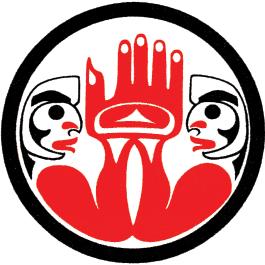
2022-2023 Scholarship
Announcement for K – 12 program
Applications will be available March 14
Applications found at: https://nuuchahnulth.org/ services/useful-resources-applications-formspolicies-agreements
The K-12 Scholarships are for students from the following Nuu-chah-nulth nations:
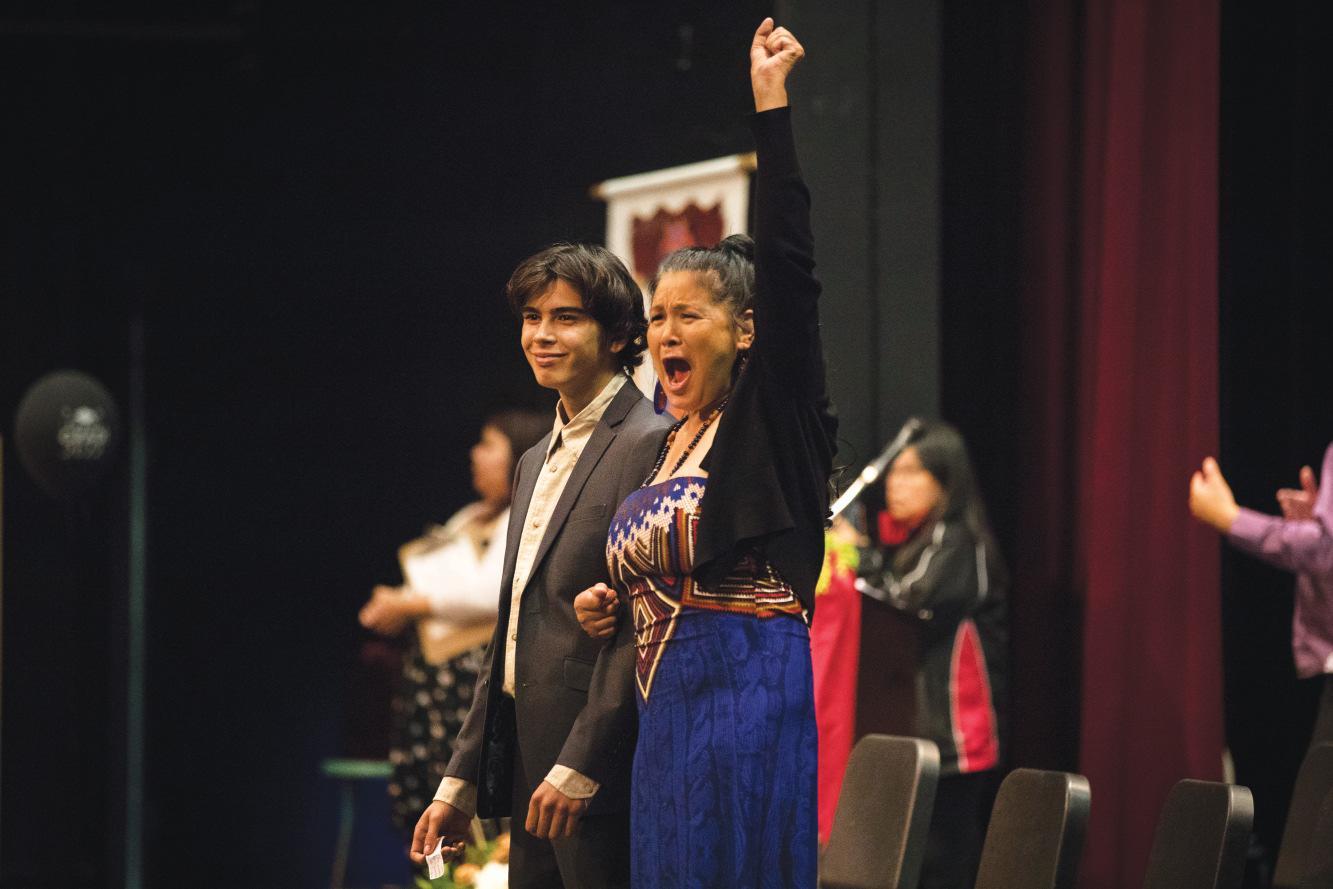
-†AHOUSAHT†-†HUPAC*ASATH†
-†NUCHATLAHT†-†DITIDAHT†
-†HUU-AY-AHT†-†TLA-O-QUI-AHT†
-†%IIH=ATIS†/†C*IINAX=INT†
-†KA:’YU:’K’T’H’/CHE:K:TLE7ET’H’†
-†TSESHAHT†-†HESQUIAHT†
-†MOWACHAHT/MUCHALAHT
For more information, please contact Richard Samuel at (250) 724-5757
Or by e-mail: scholarships@nuuchahnulth.org
Page 20— Ha-Shilth-Sa—March 9, 2023








 By Denise Titian Ha-Shilth-Sa Reporter
By Denise Titian Ha-Shilth-Sa Reporter

















































 ~ Ellen Frood, Sage Haven Executive Director
~ Ellen Frood, Sage Haven Executive Director


